We’re finally getting rain like in the old days…that is, before the several drought years. One thing that is different in the last few years is that the news media now has days of coverage Before The Storm. It’s good to have warning of hurricanes, floods, etc, but sometimes I think that there is a little overkill on the Before reporting. There must be other news…oh wait, I guess if it is the political climate instead of the atmospheric climate maybe I’d rather hear about the weather after all.
I was gone Friday night (that’s for another blog post). Heavy rain had been predicted rain through the whole weekend. The scene below is not abnormal for a regular (non-drought) winter here. We don’t handle winter well at our facility. The first thing you’ll notice in this photo is the pink line. That’s my new discovery–that I can draw on my photos!!! Yippee! More fun with photos! I’ll try not to overdo it once I’m done with this post. The pink outlines the waterlogged wet area behind the barn, around the Mt. Meridian (the compost/manure pile). The arrow indicates how that water eventually has to drain IF it can flow away. Or it eventually evaporates or soaks into the ground. That is a slow process with our clay soil that is already waterlogged.
The first thing you’ll notice in this photo is the pink line. That’s my new discovery–that I can draw on my photos!!! Yippee! More fun with photos! I’ll try not to overdo it once I’m done with this post. The pink outlines the waterlogged wet area behind the barn, around the Mt. Meridian (the compost/manure pile). The arrow indicates how that water eventually has to drain IF it can flow away. Or it eventually evaporates or soaks into the ground. That is a slow process with our clay soil that is already waterlogged.
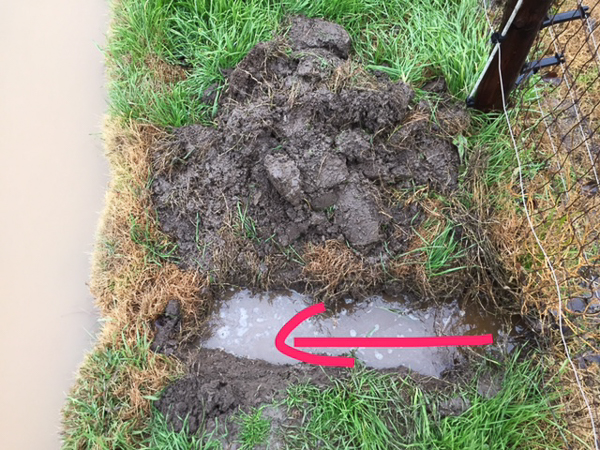
This photo is taken from the same location as the last but at the fence that borders the ditch (irrigation in the summer, run-off in the winter). It’s hard for me to tell if the water level around the manure pile is lower or higher than the level in the ditch right now. At times when I’m irrigating the irrigation water flows backward into the barn area because it flows through gopher or ground squirrel holes. I don’t want to dig a ditch if it’s going to drain the ditch water back towards the barn area. So I started digging. The water was flowing the right direction.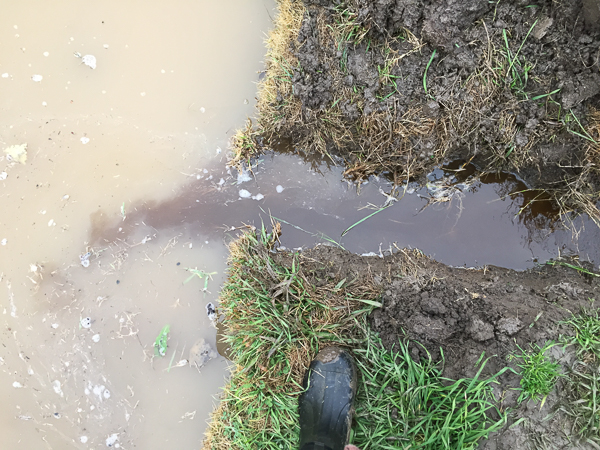
Here is where I cut through to the ditch. You can see the water flowing into the ditch although the levels aren’t that much different.
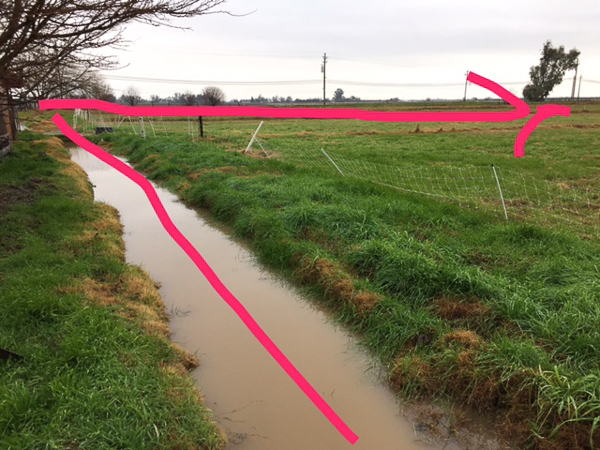
The water has to flow east in the ditch and then south. It leaves the property near that tree by going under the driveway to the south and into the canal.
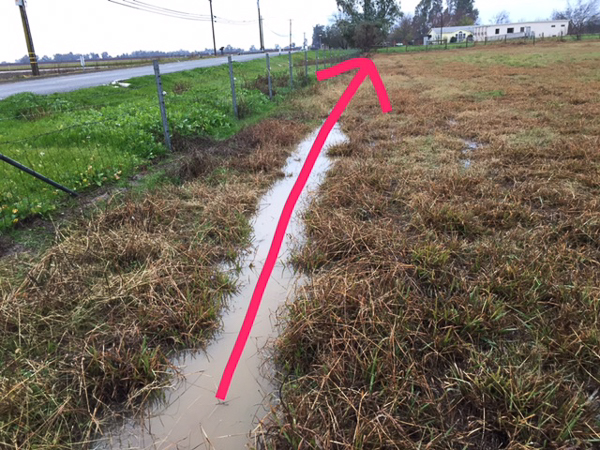
Even in the summer I have a hard time getting the ditch to drain quickly. I walked to the ditch going south. You can see where the water has to go. There is much less water here than in the east-west ditch. This one is much smaller and full of grass. I started digging out dallisgrass clumps. I walked the whole ditch back and forth looking for the next problem spot–where the grass seemed to be hindering the water flow. I didn’t by any means dig the whole thing bigger and deeper but I think I made some difference in the flow.
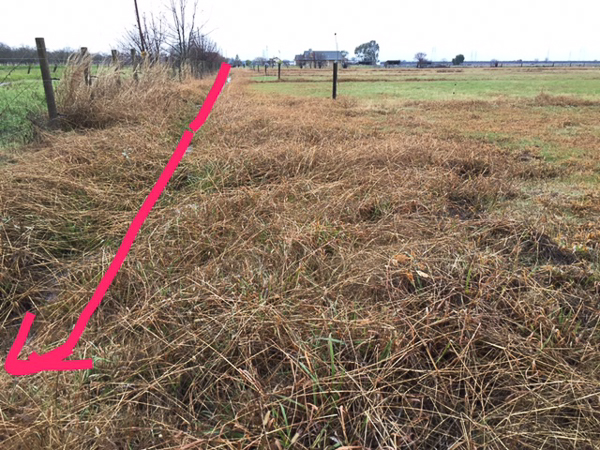
This is taken when standing in the corner near that tree and looking west. The arrow indicates the tail-water ditch where water flows after irrigating. The pastures are saturated and some water is flowing there now, but notice the overgrown dallisgrass.
While I’m almost on my dallisgrass soapbox I’ll point out the green parts of these last two photos. This is a Mediterranean climate and that means that we have winter rains and dry summers. When it rains in the fall the grass and forbs start to grow. This growth is dependent on temperature and light. When it warms up in the spring the grass takes off and grows like crazy. By May or June things dry out and grass sets seed and it dries out. So…in the spring I count on that annual growth for feeding sheep. I count on the clovers and trefoil (which I have because I irrigate) to sustain us through the summer. Dallisgrass is a perennial grass that grows in the summer and eventually gets out of control and too coarse and fast growing for the sheep to keep up with. The last few years I have mowed after grazing to keep it manageable. These photos show why that is important. The green parts in the photo above shows green growth in the paddocks I mowed. Where it is brown is the overgrown dallisgrass where hardly anything grows. Same with the photo below. The roadsides are covered with green grass and forbs but the overgrown dallisgrass that wasn’t eaten or mowed blocks everything. That means less feed.
Back to the issue at hand, which is water and ditches.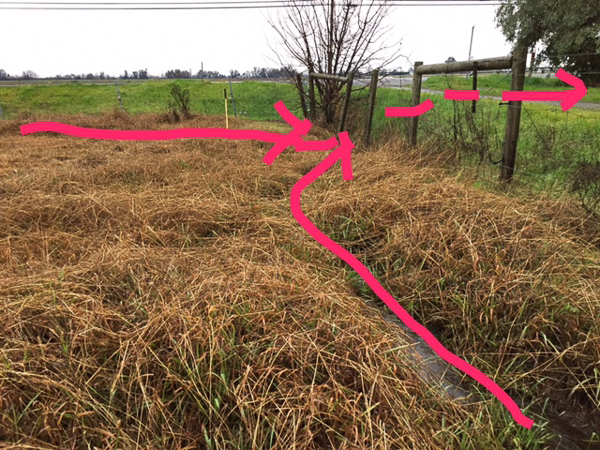
This photo shows where the water leaves the property, flowing under the driveway to the south and into the canal.

After doing what I could in that ditch I walked back to where I had started digging near the barn. Water was still flowing.
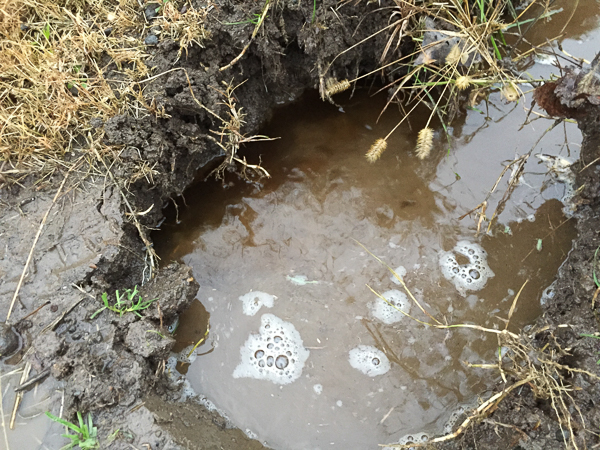
So I went into Faulkner’s pen and started digging north towards the manure pile and barn. Here is a closeup of some of my ditch from the other direction. The fence is at the top of this photo. You can see how the water is flowing UNDER the surface through rodent hoels.
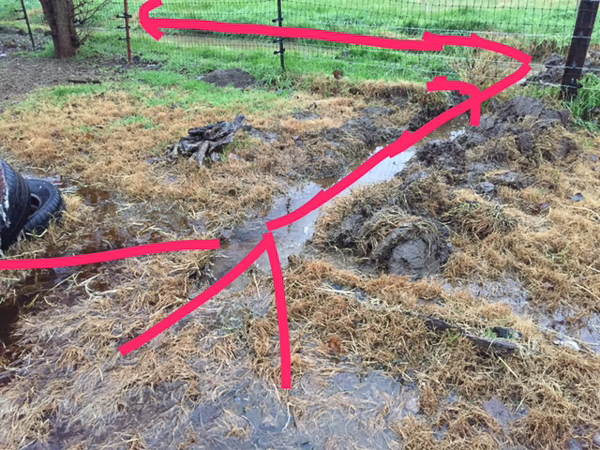
My ditch isn’t nearly big enough to drain everything, but it’s better than nothing. At least it feels like progress.
There will be another blog post later about my fantastic Friday/Saturday AWAY from the farm. Maybe fewer marked up photos too. Right now I am going to Higby’s to get new rubber boots because mine are too old and water is seeping through at the ankles.

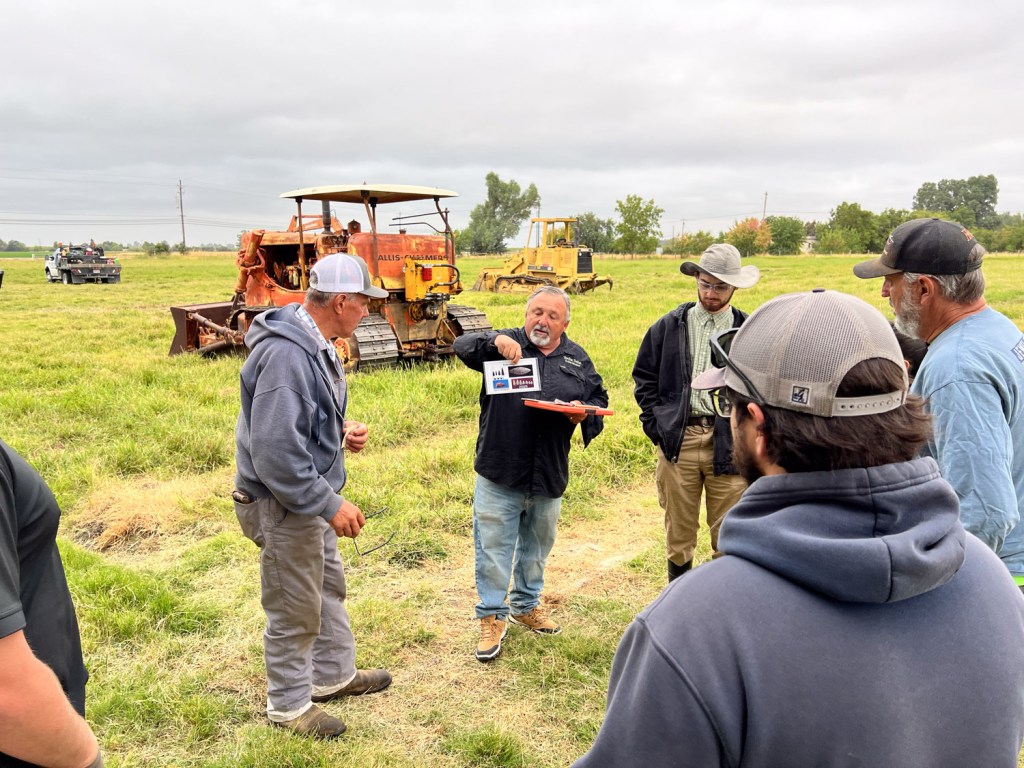
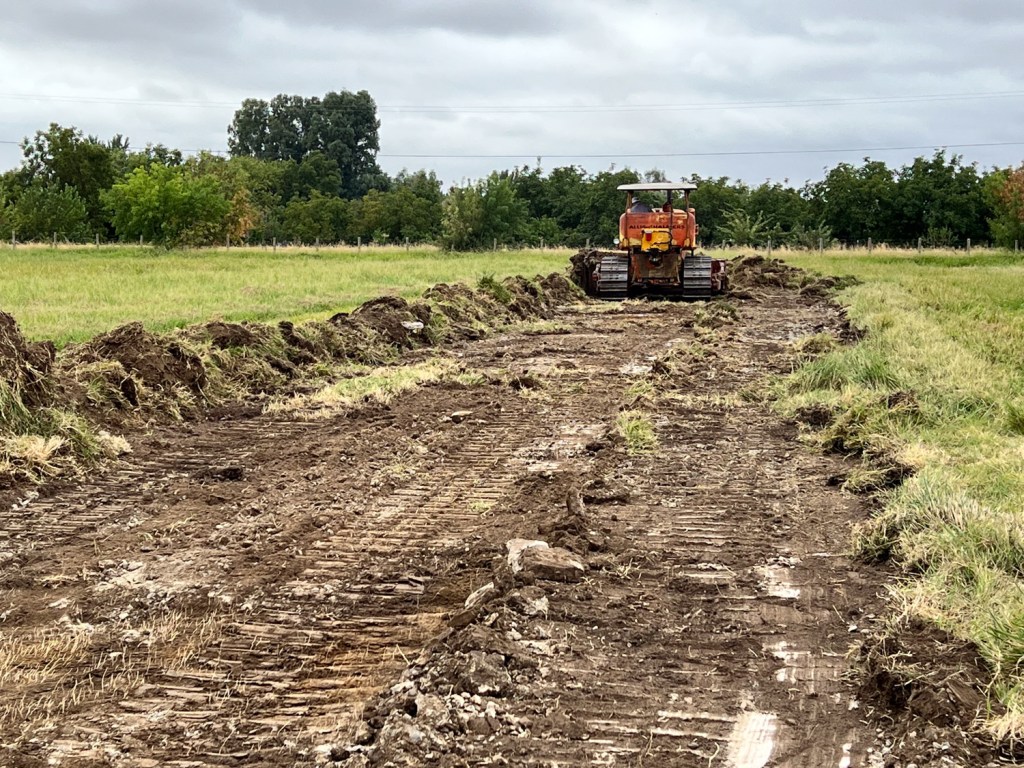

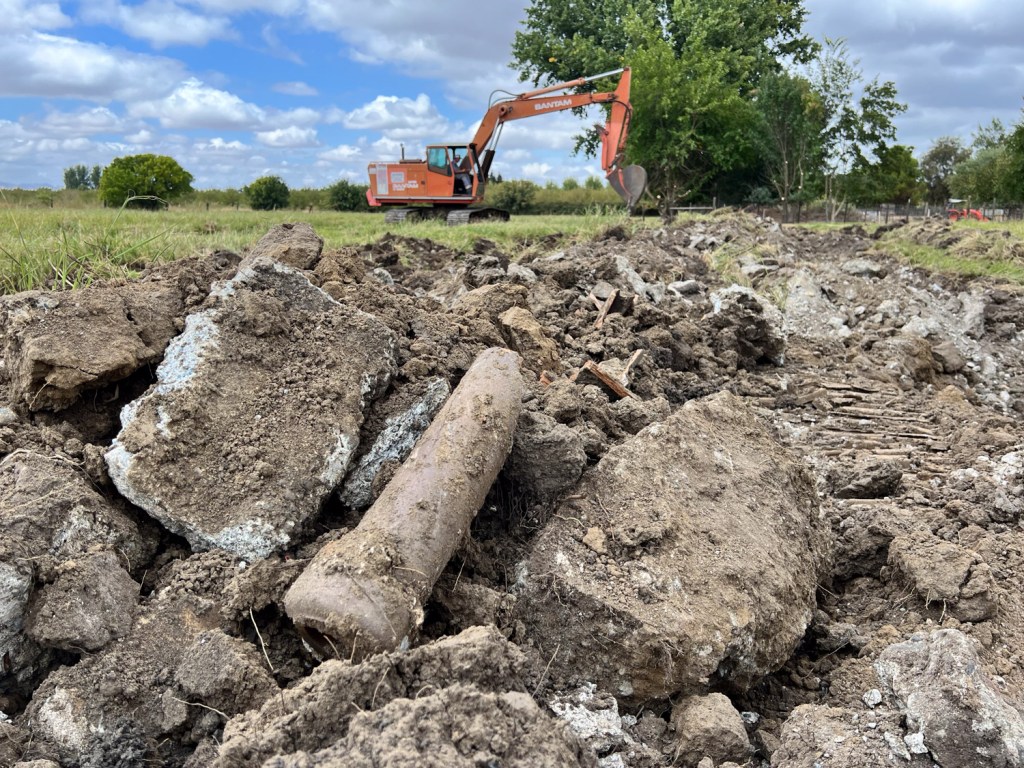



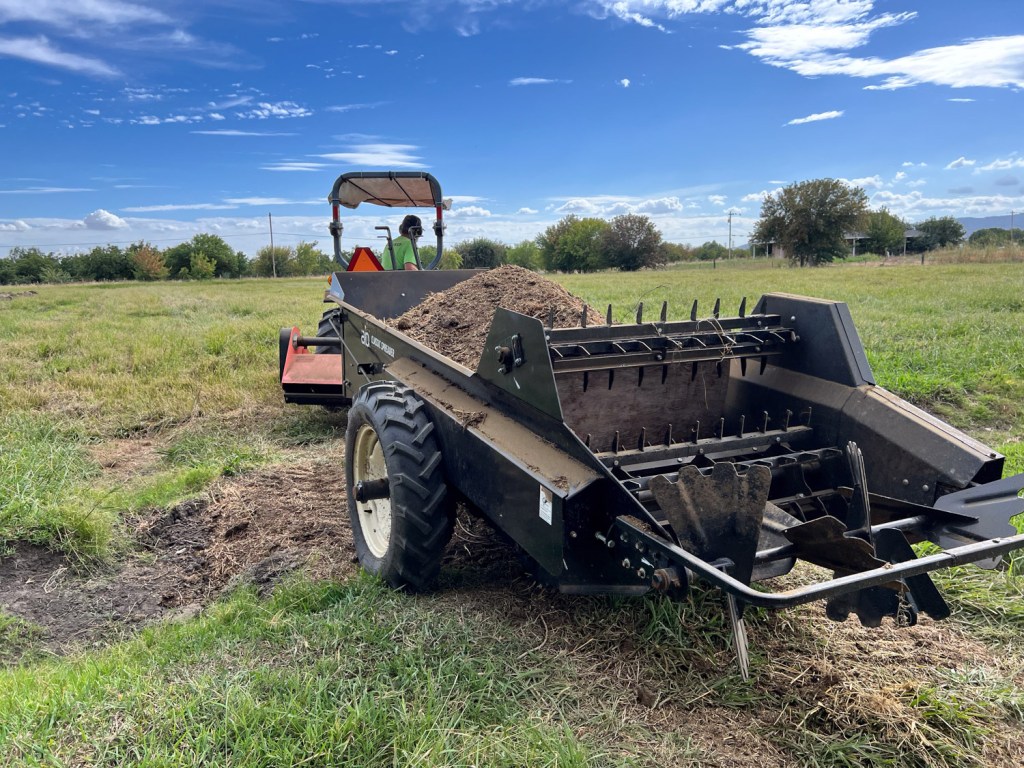

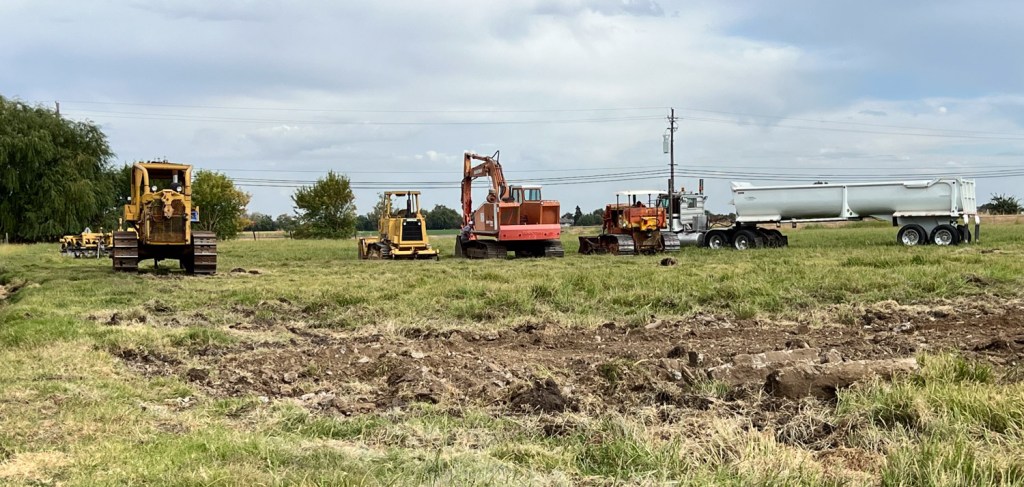


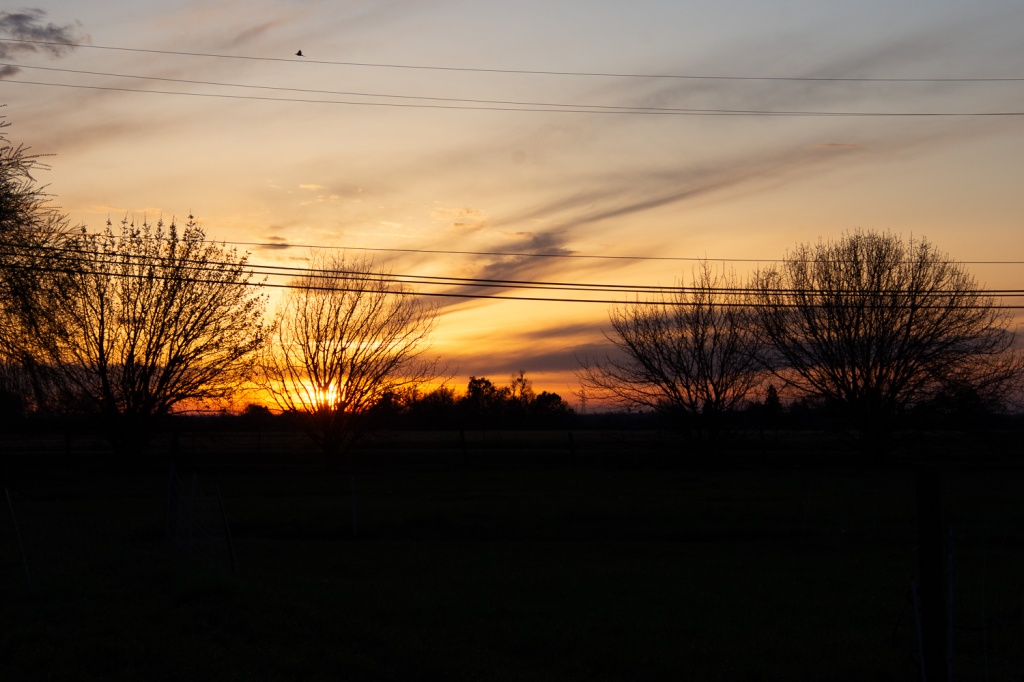
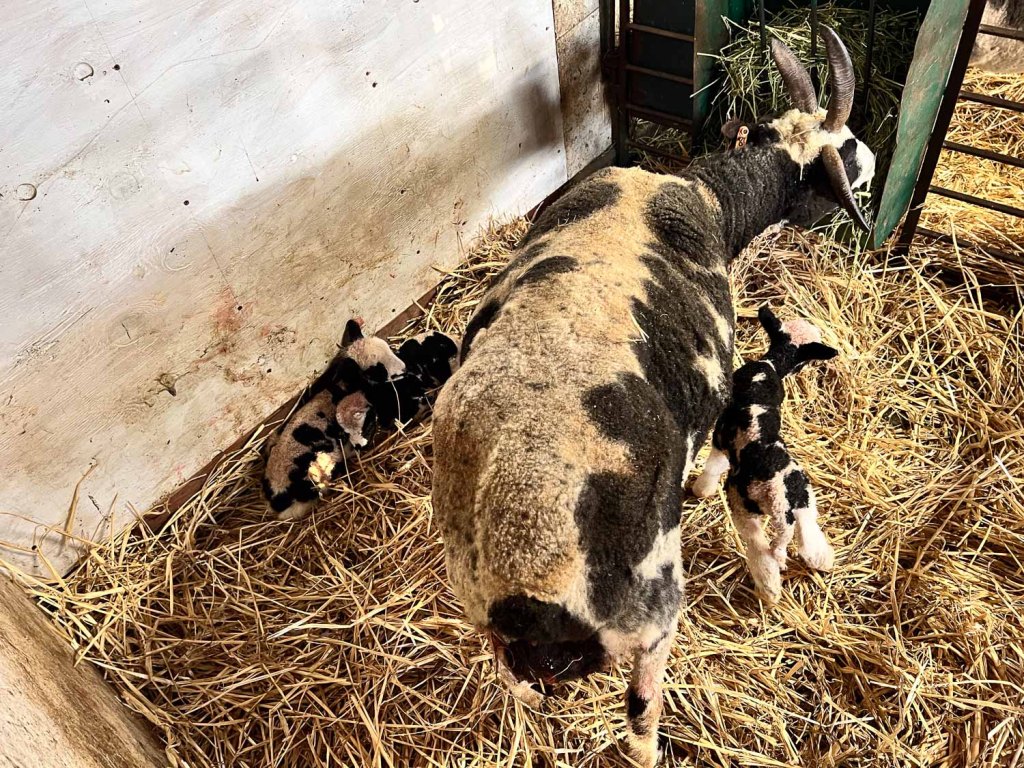


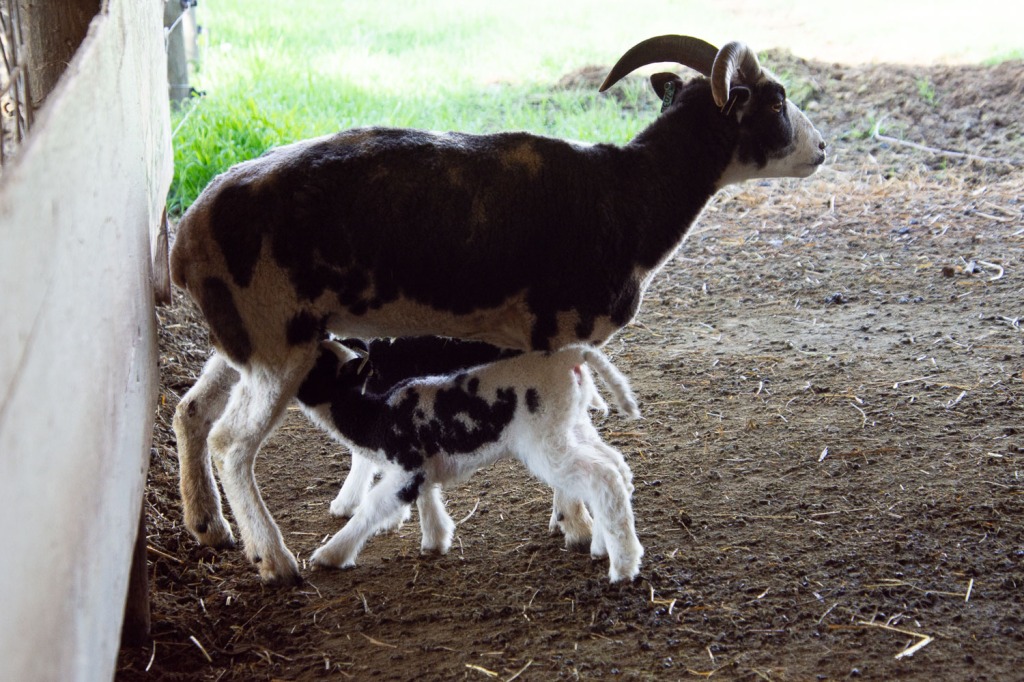

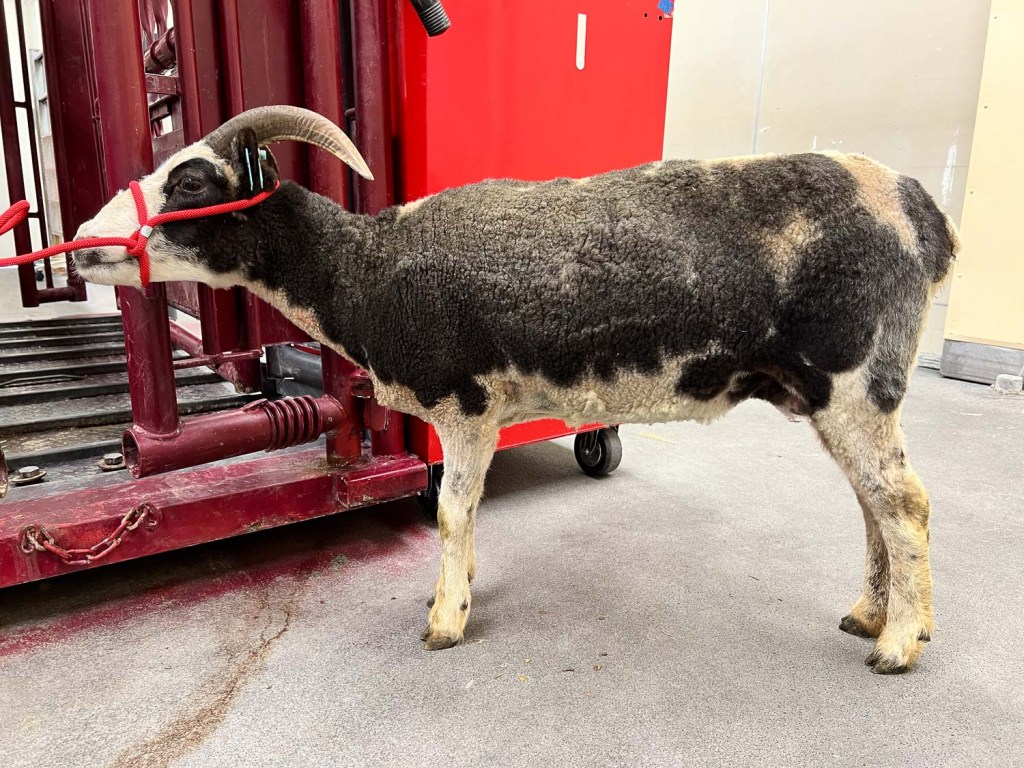

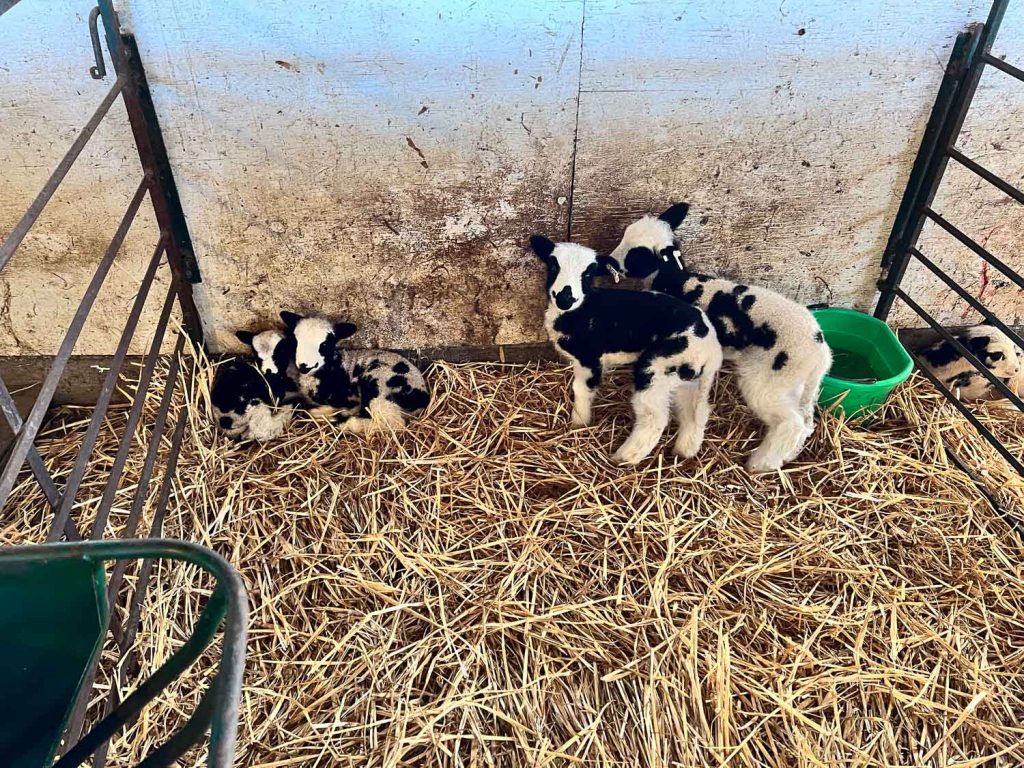
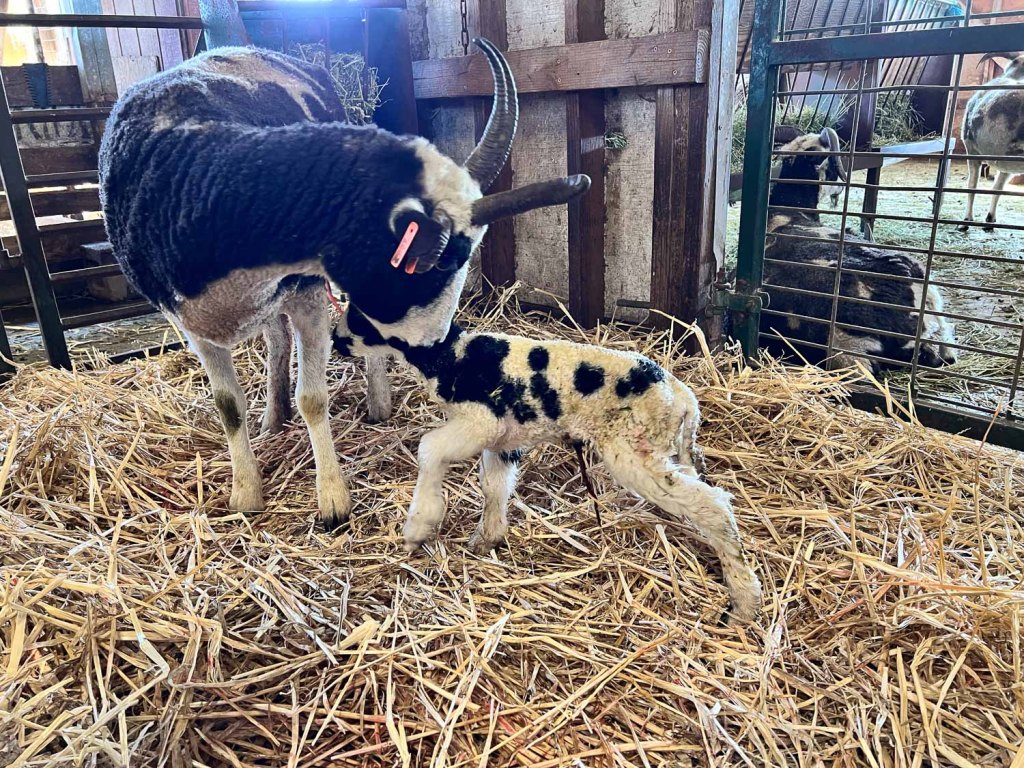
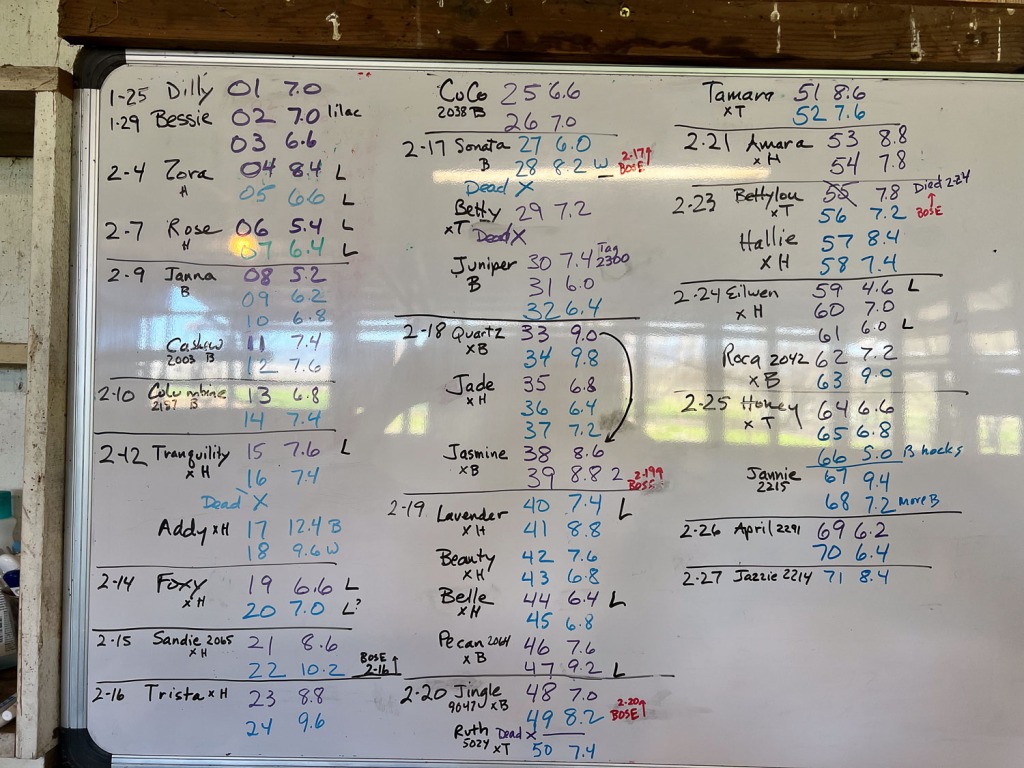
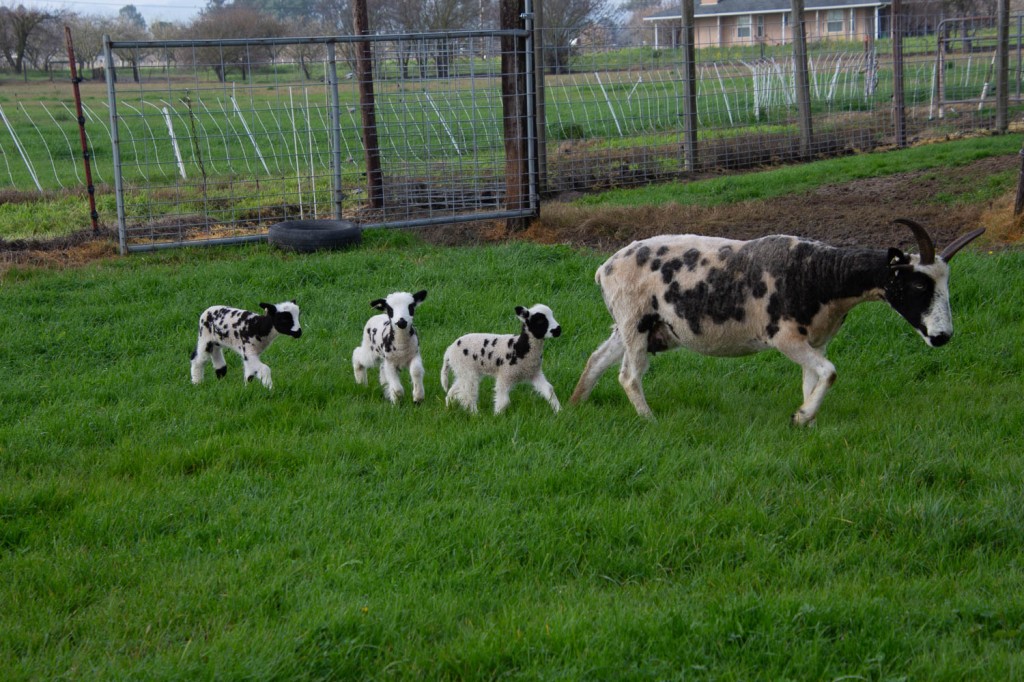

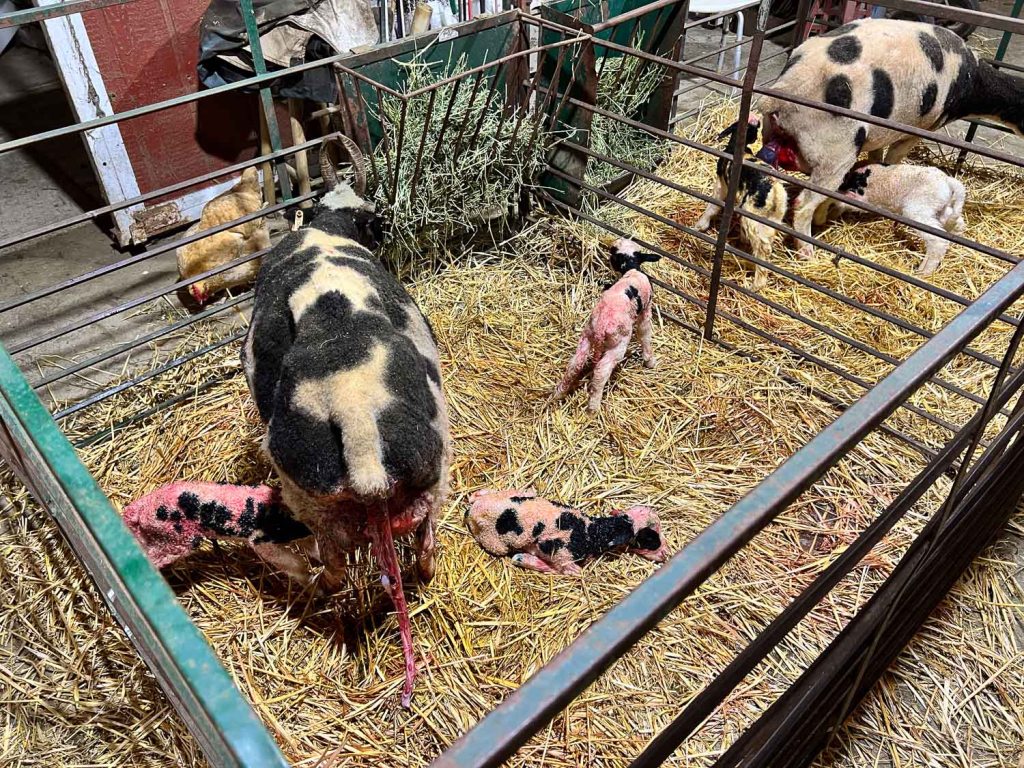

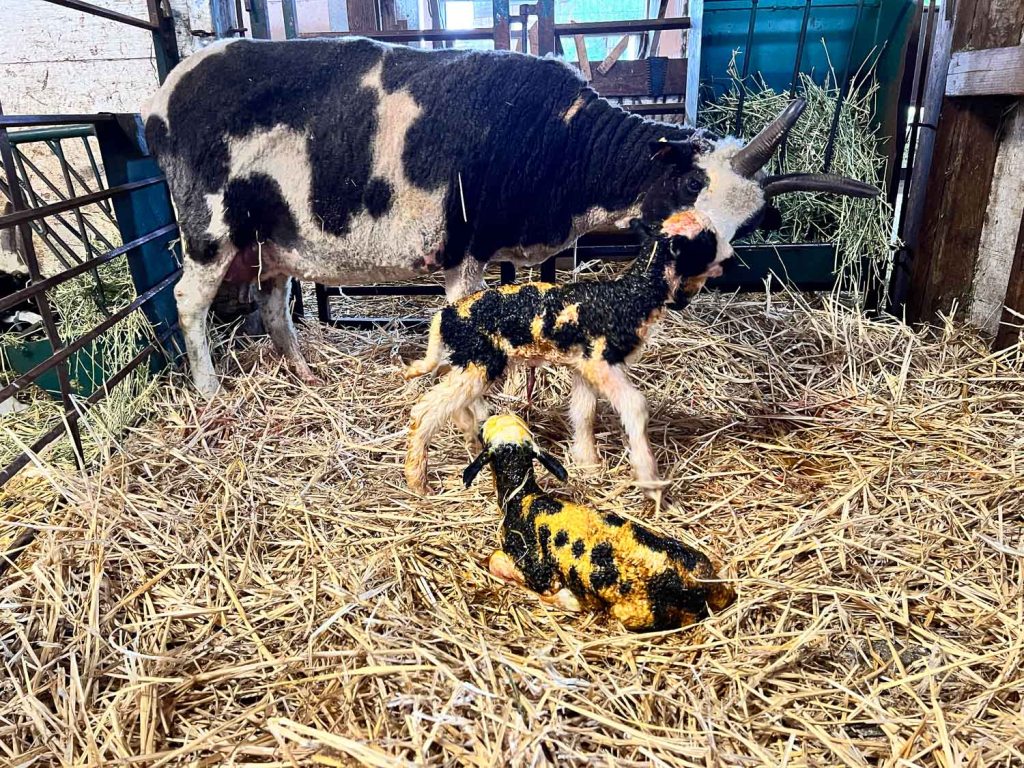















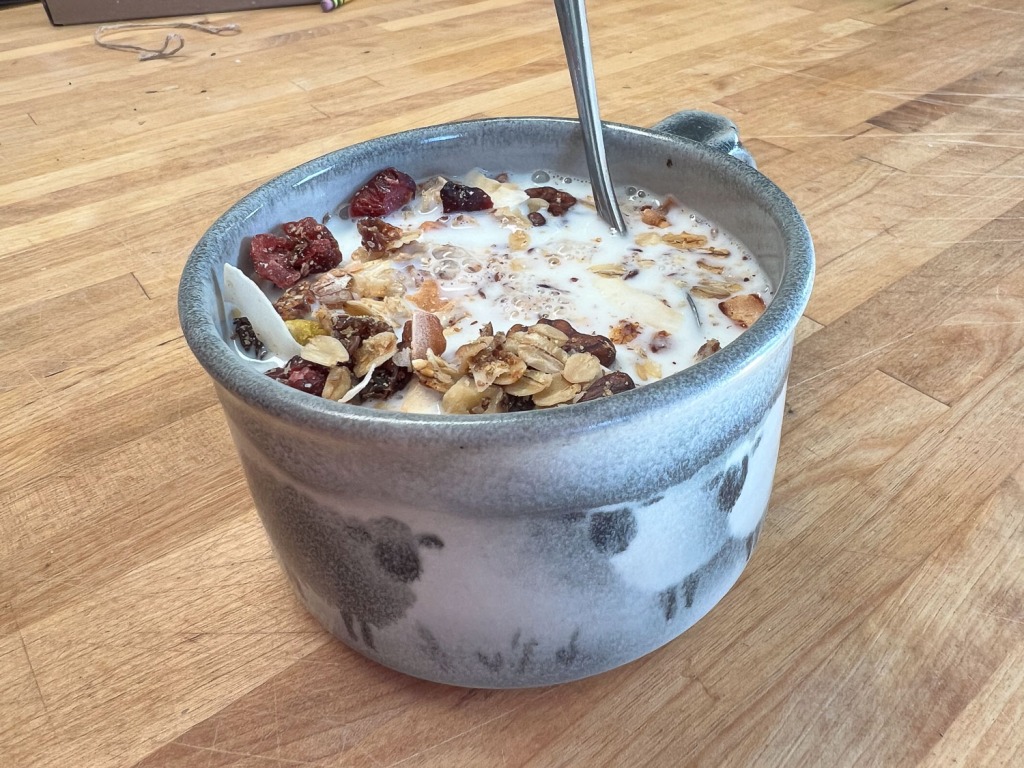


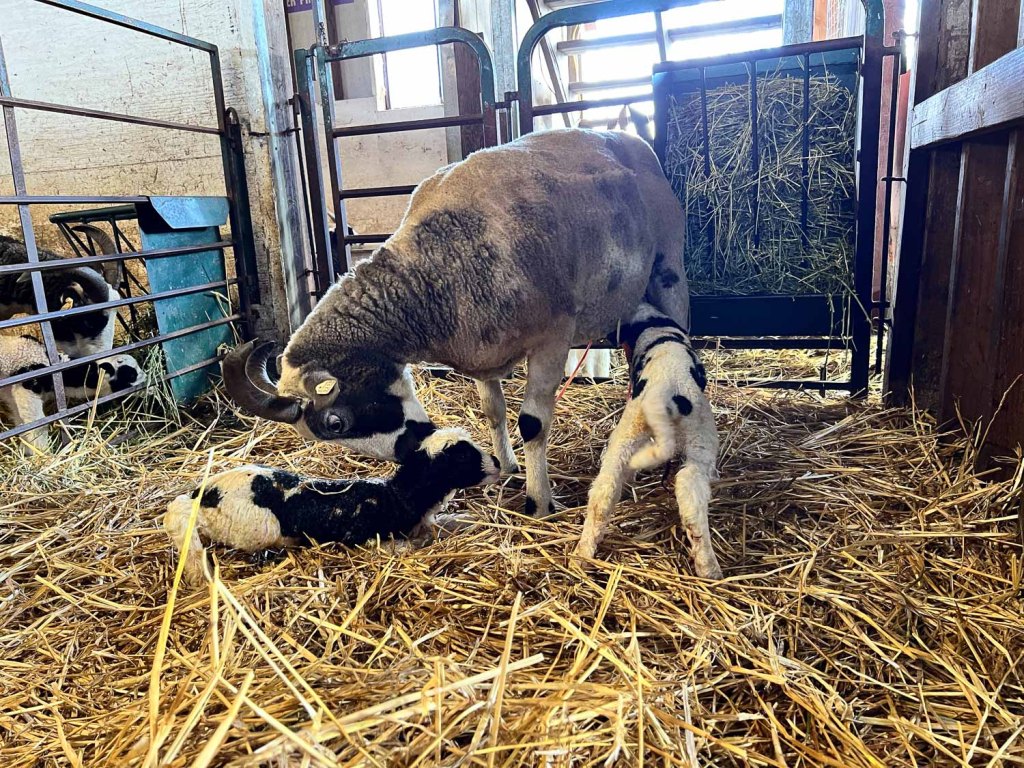




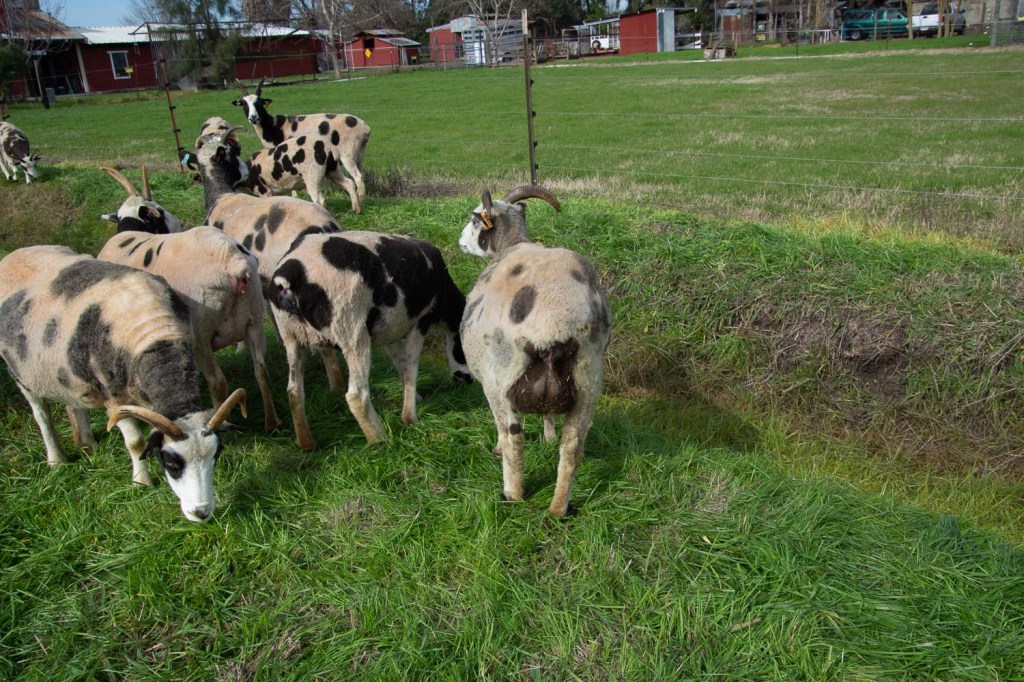

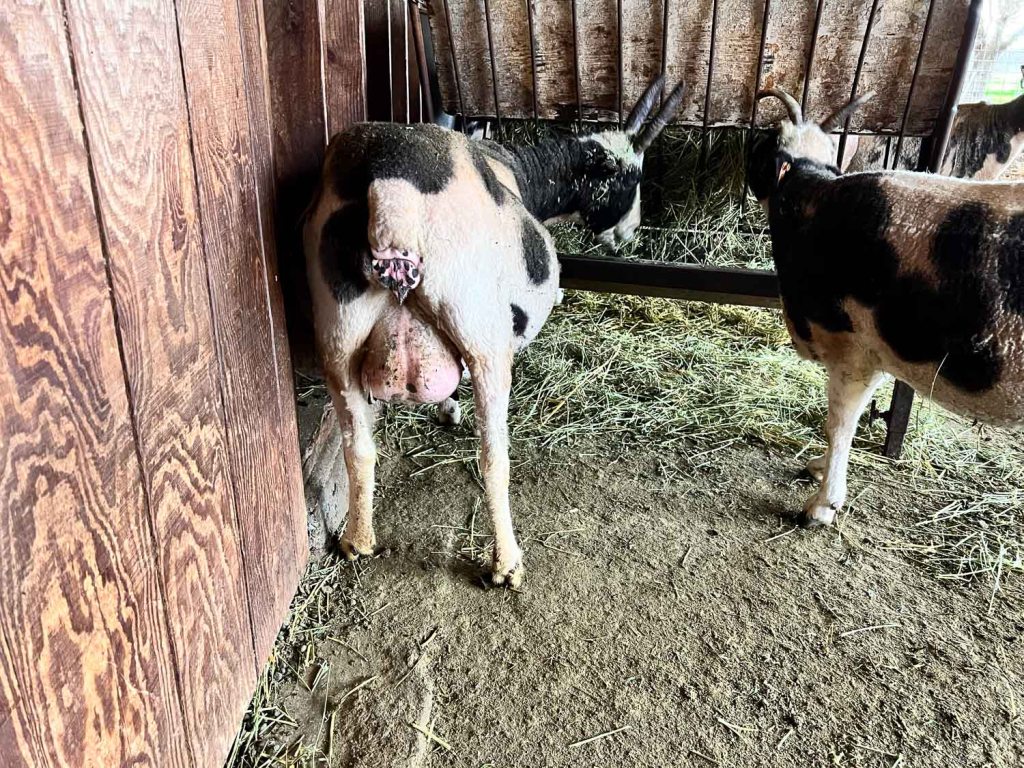

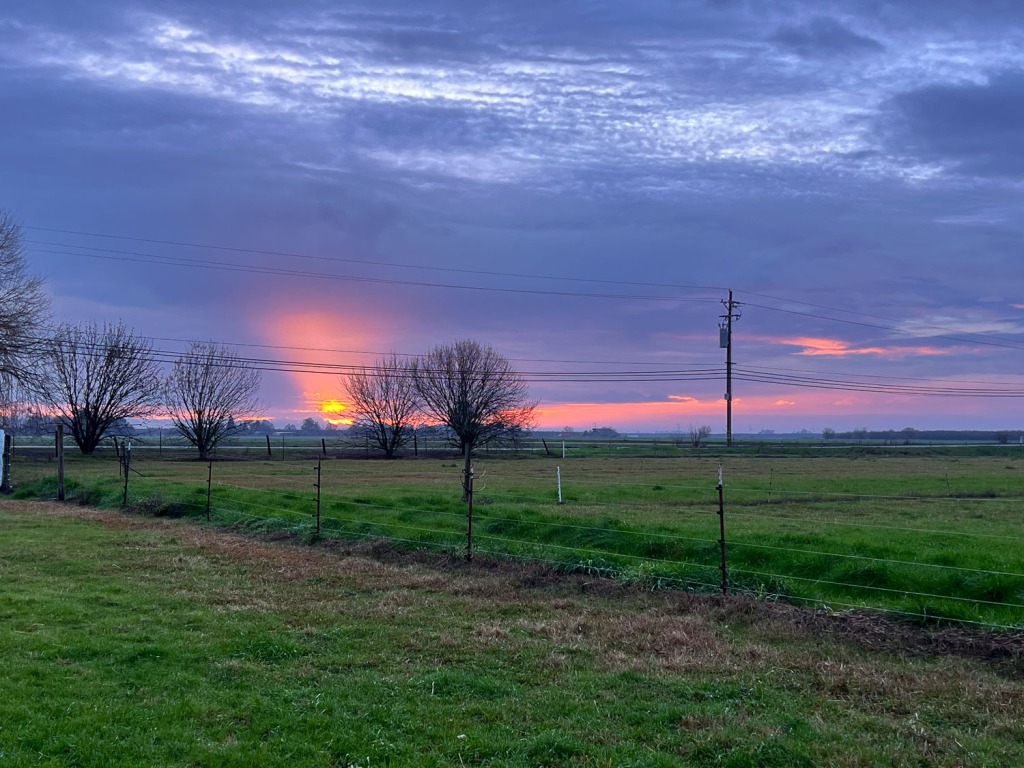
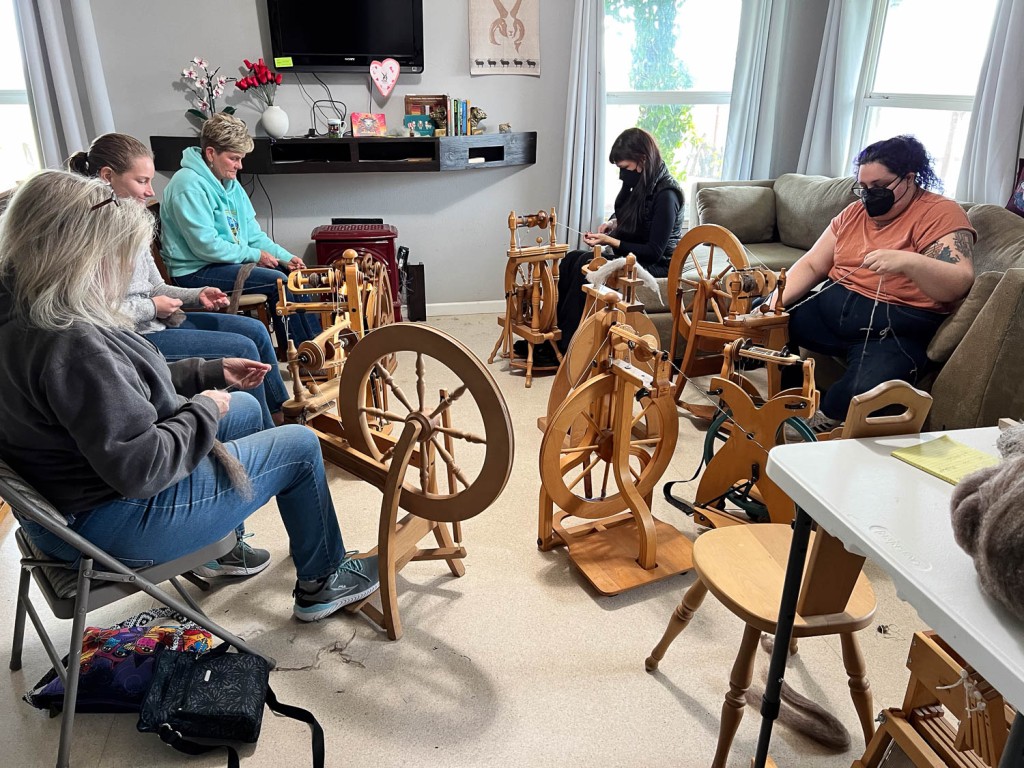

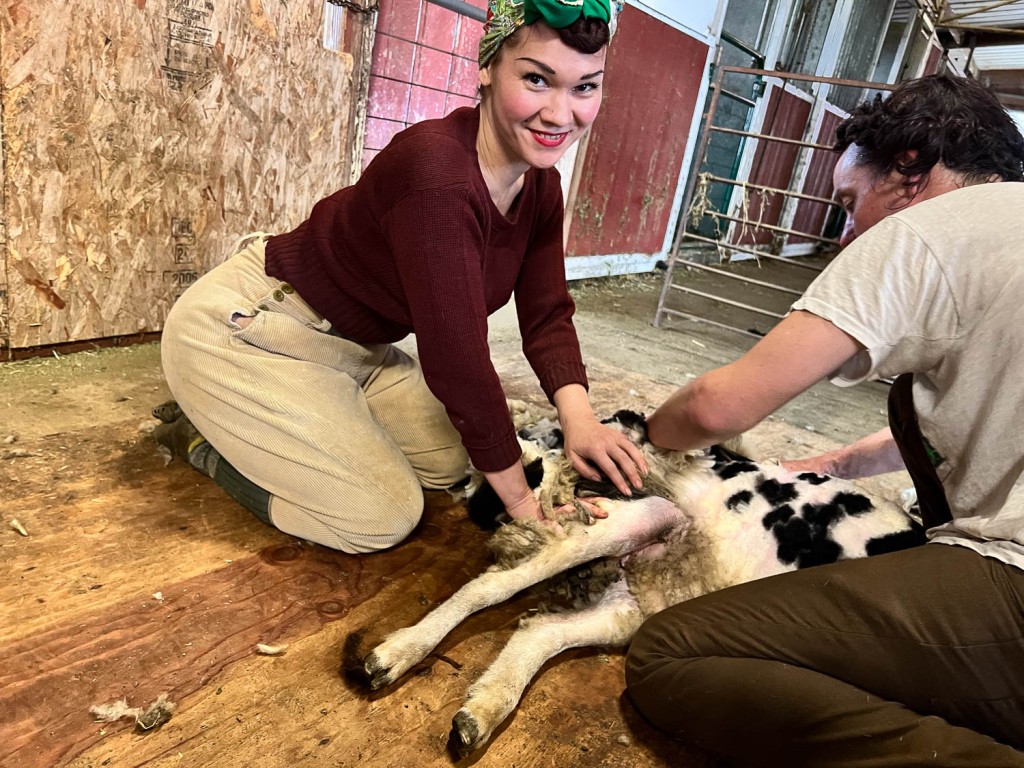


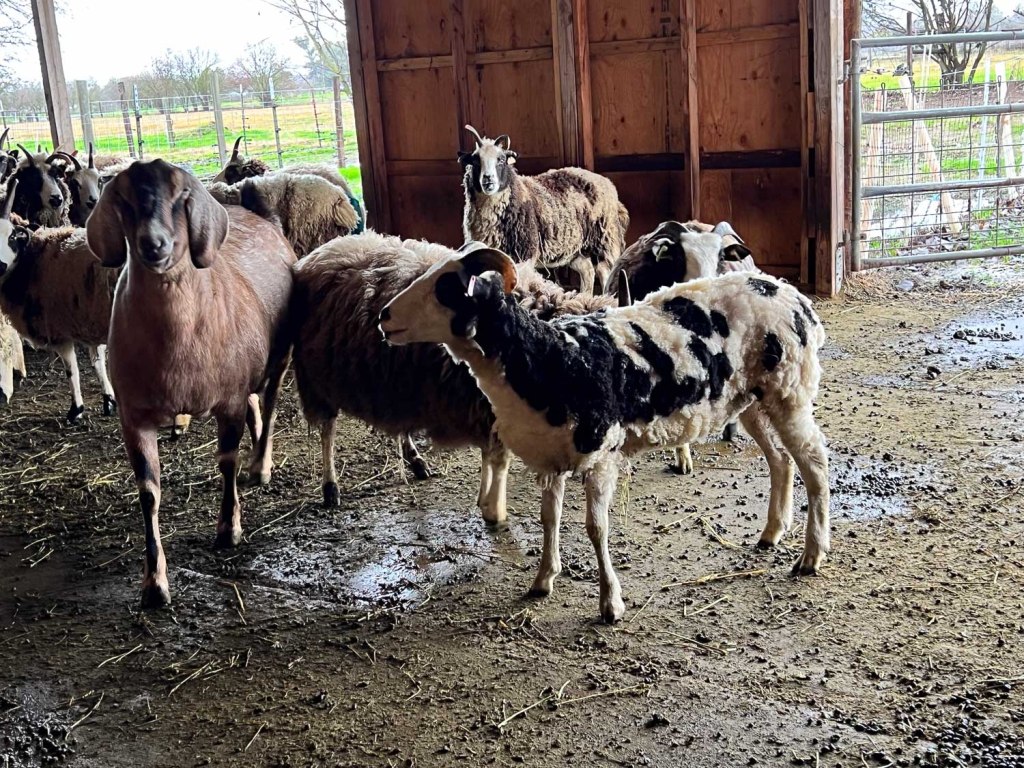
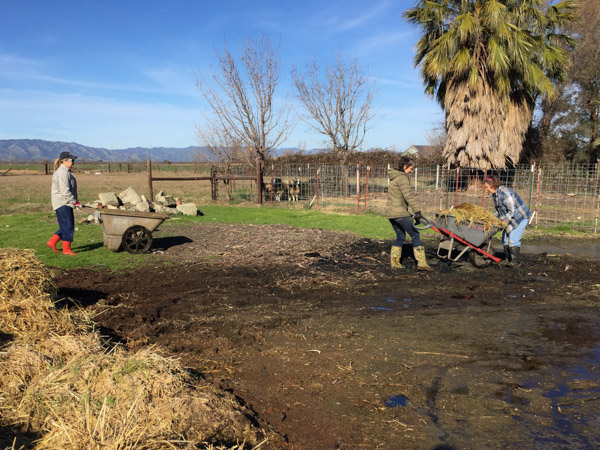
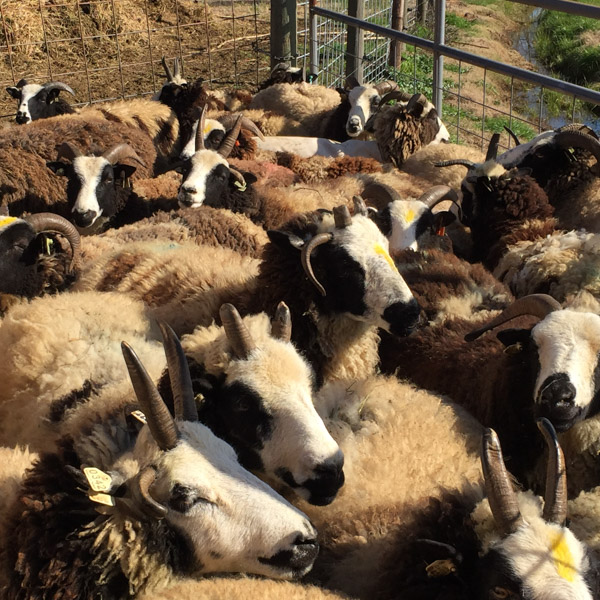
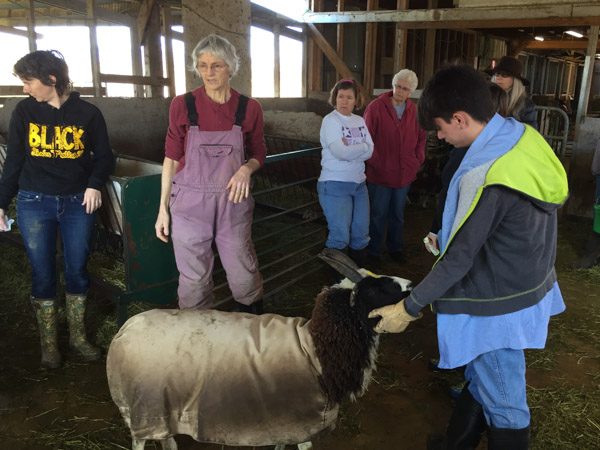
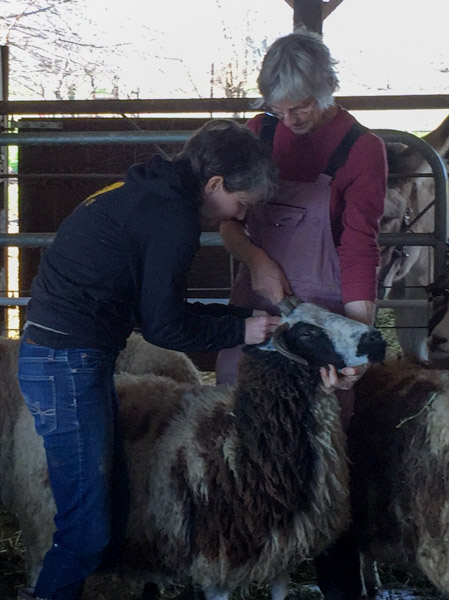
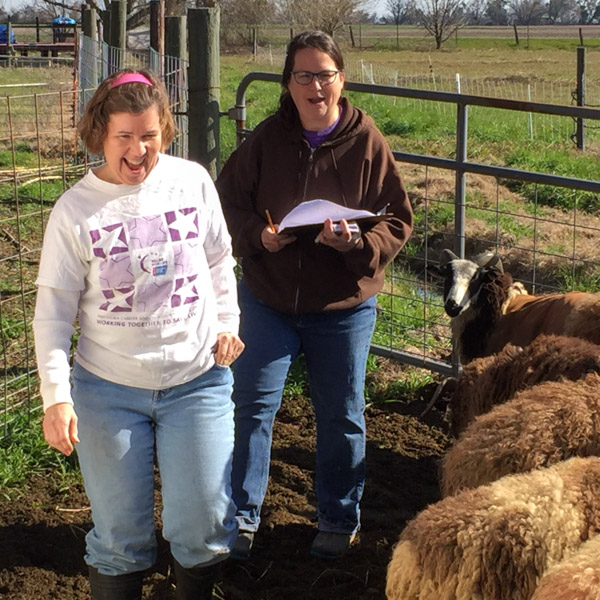
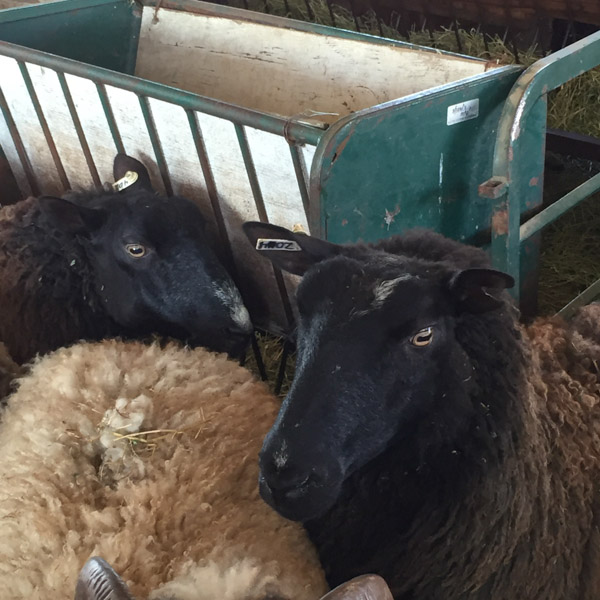
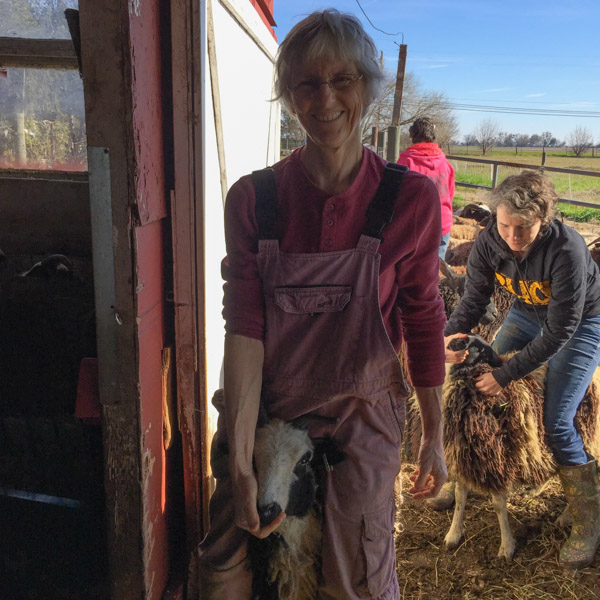
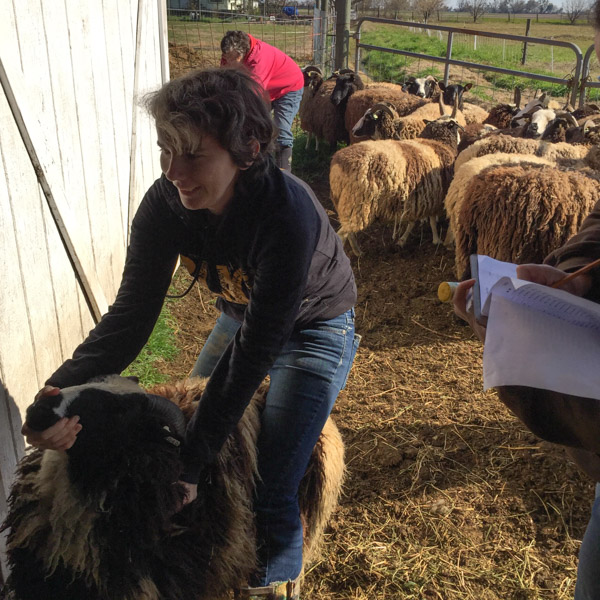

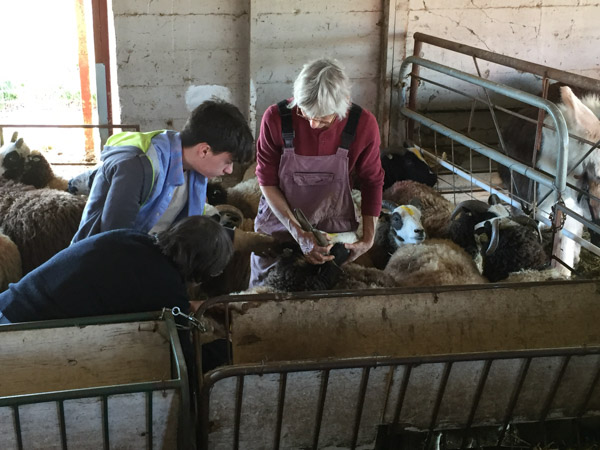
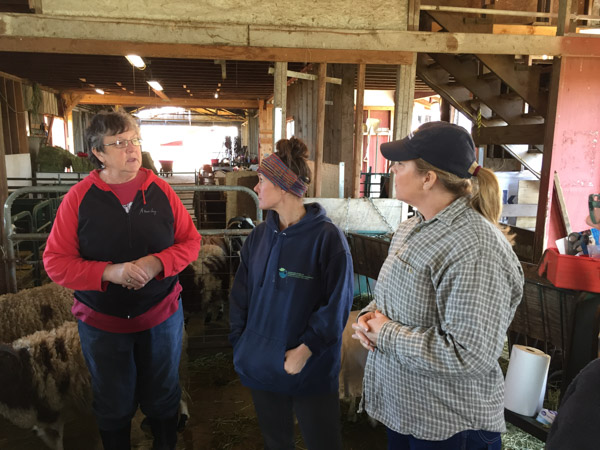
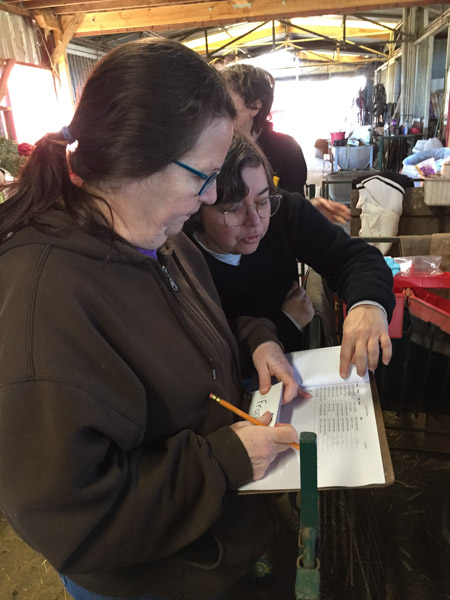
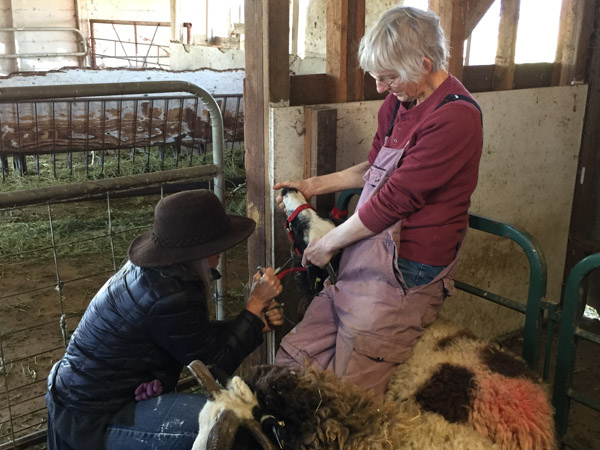
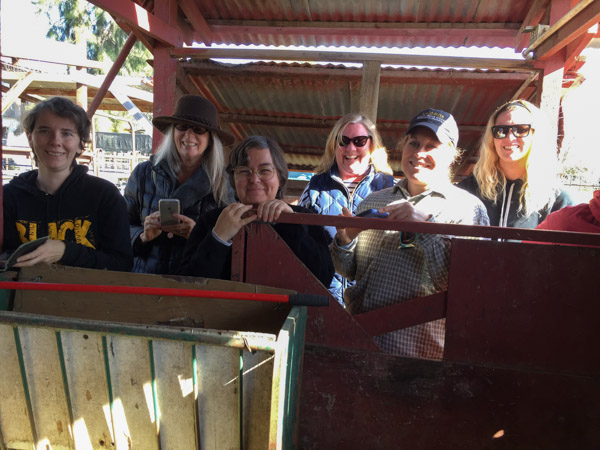
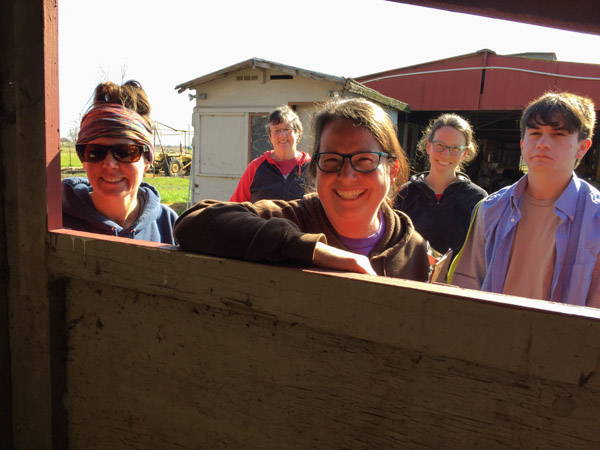
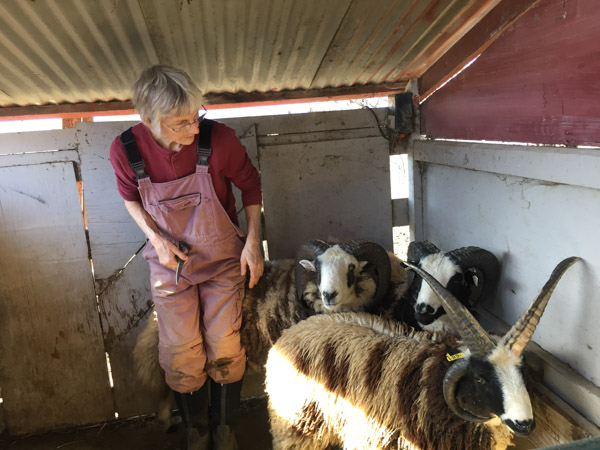
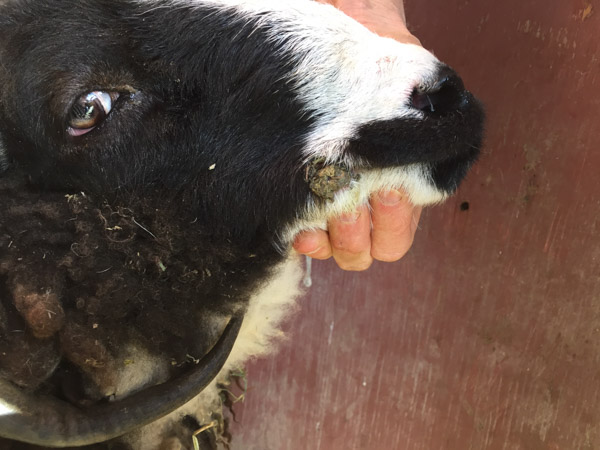
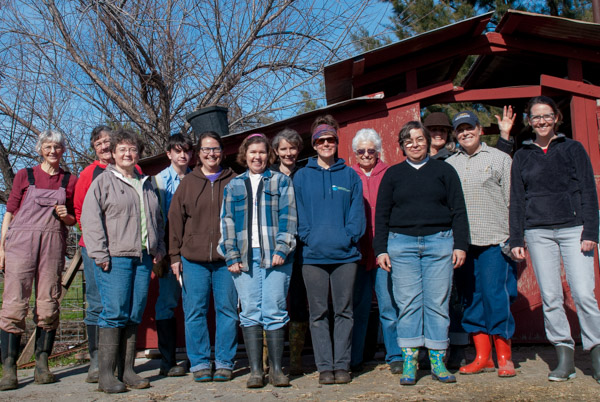
 The first thing you’ll notice in this photo is the pink line. That’s my new discovery–that I can draw on my photos!!! Yippee! More fun with photos! I’ll try not to overdo it once I’m done with this post. The pink outlines the waterlogged wet area behind the barn, around the Mt. Meridian (the compost/manure pile). The arrow indicates how that water eventually has to drain IF it can flow away. Or it eventually evaporates or soaks into the ground. That is a slow process with our clay soil that is already waterlogged.
The first thing you’ll notice in this photo is the pink line. That’s my new discovery–that I can draw on my photos!!! Yippee! More fun with photos! I’ll try not to overdo it once I’m done with this post. The pink outlines the waterlogged wet area behind the barn, around the Mt. Meridian (the compost/manure pile). The arrow indicates how that water eventually has to drain IF it can flow away. Or it eventually evaporates or soaks into the ground. That is a slow process with our clay soil that is already waterlogged.








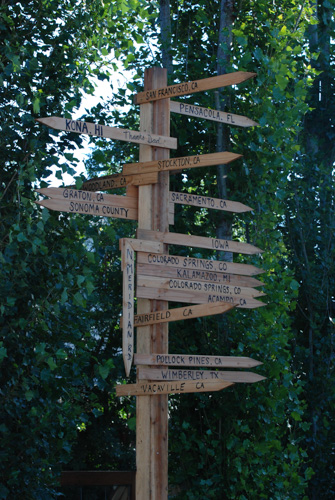
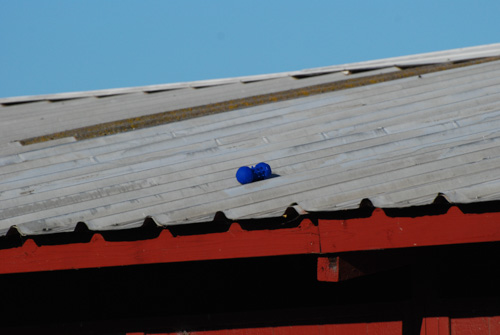

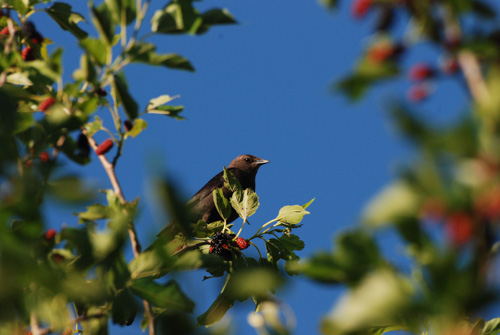
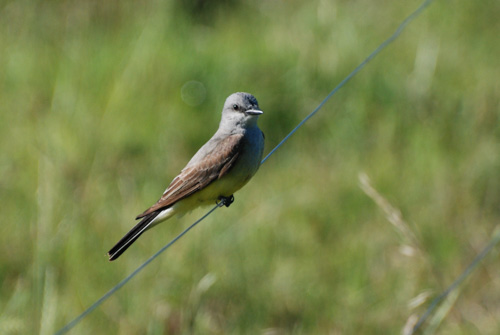
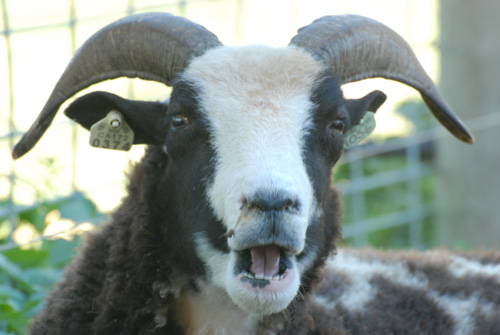

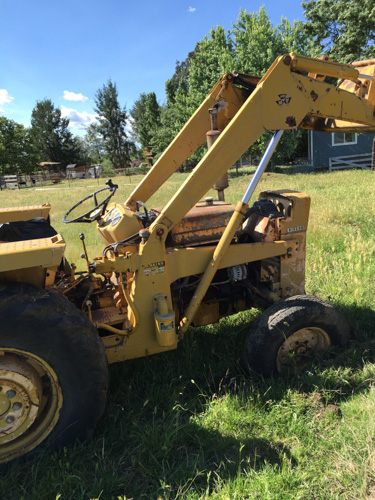



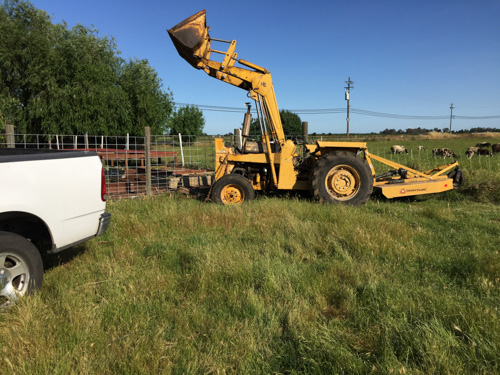
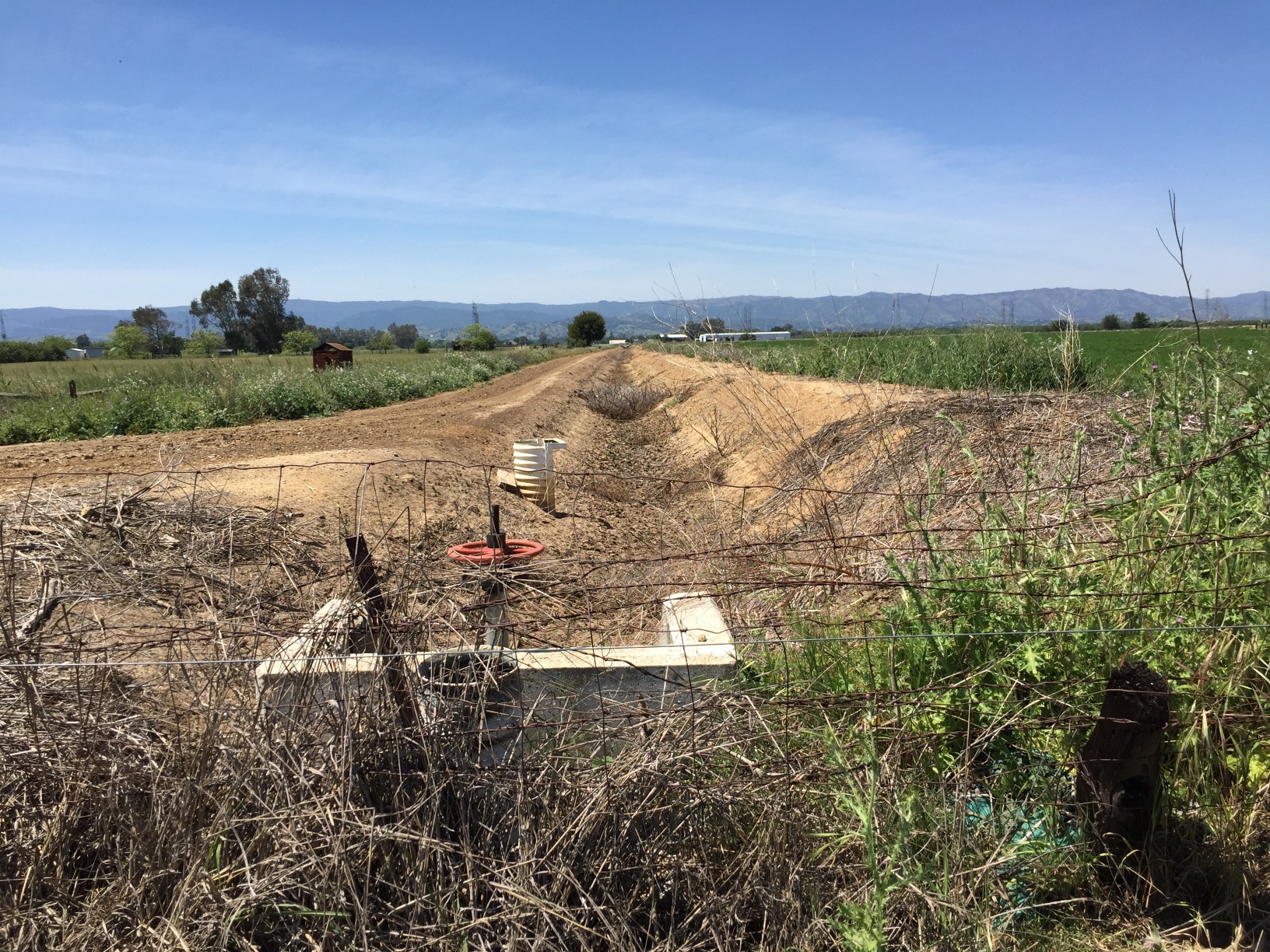 This was taken from standing in the northwest corner of the property and looking west. When SID (Solano Irrigation District) opens the right gate the water comes down that canal, through a gate in the cement structure at the bottom of the photo and…
This was taken from standing in the northwest corner of the property and looking west. When SID (Solano Irrigation District) opens the right gate the water comes down that canal, through a gate in the cement structure at the bottom of the photo and…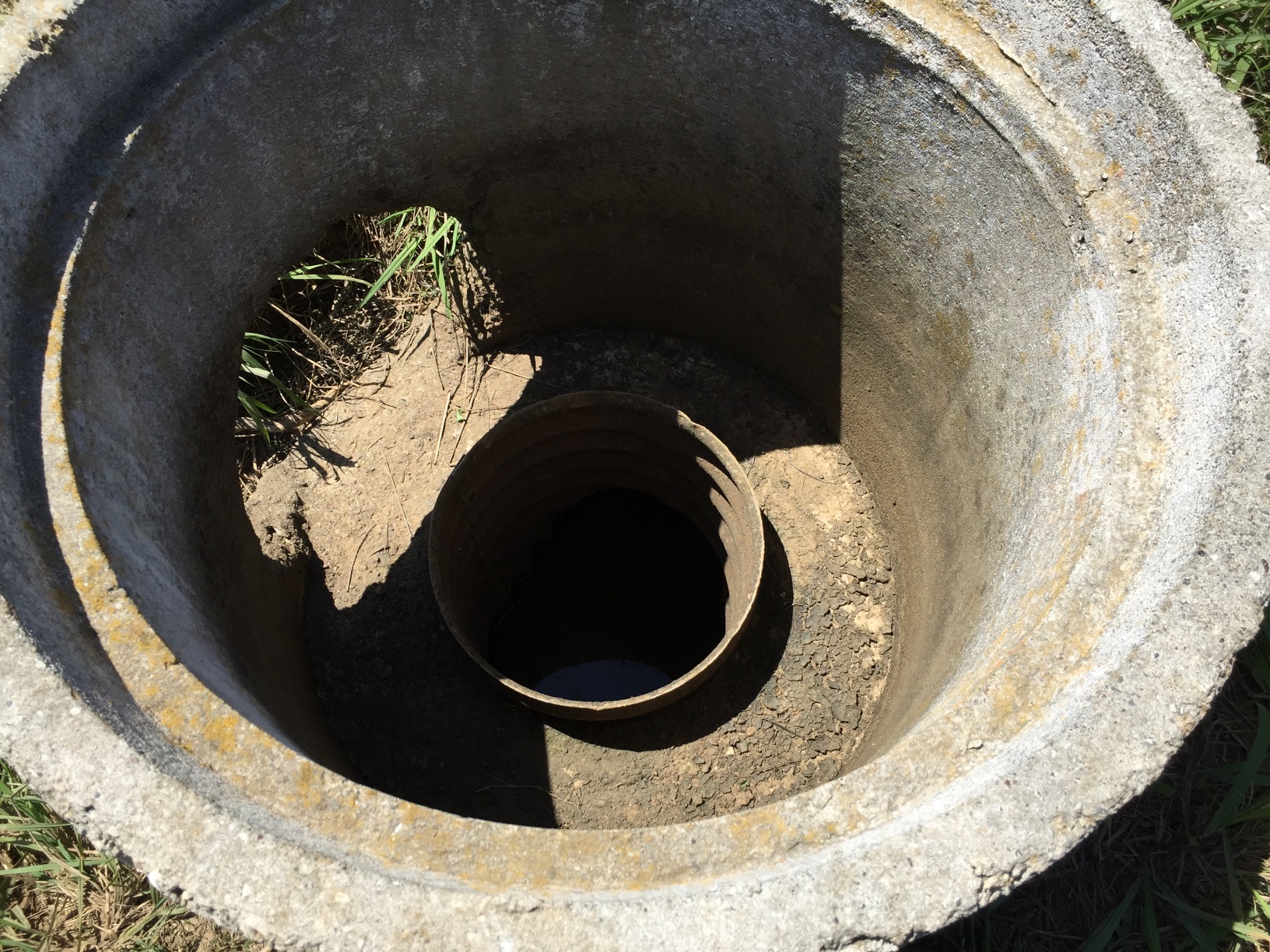 …comes up through this standpipe. It goes out that hole on the left and…
…comes up through this standpipe. It goes out that hole on the left and…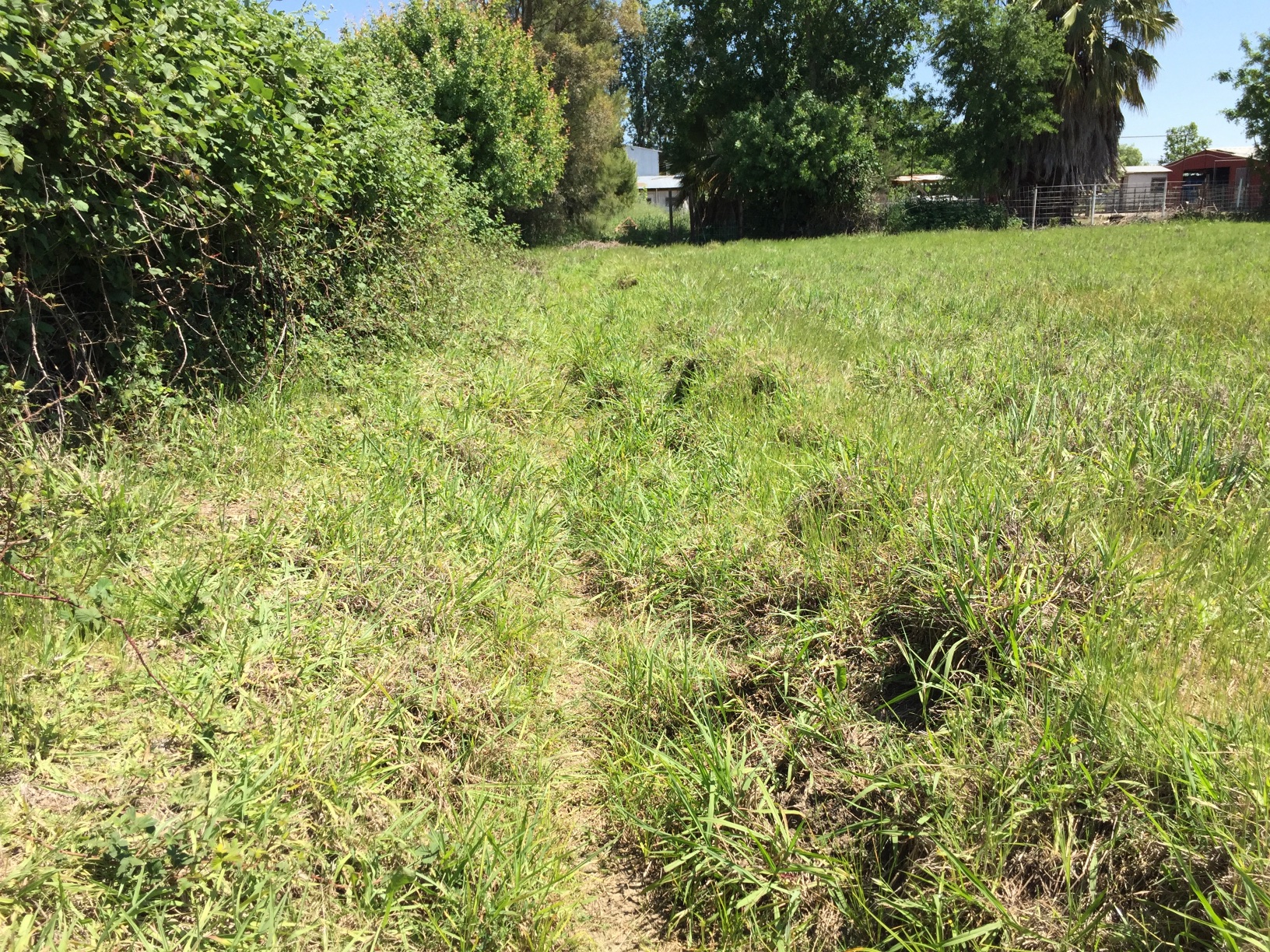 into this ditch. At the end of the ditch it turns south and goes into the other part of the pasture. Later in the year this ditch will require weed-wacking for the whole length to allow the water to flow. This time I didn’t need to do that.
into this ditch. At the end of the ditch it turns south and goes into the other part of the pasture. Later in the year this ditch will require weed-wacking for the whole length to allow the water to flow. This time I didn’t need to do that.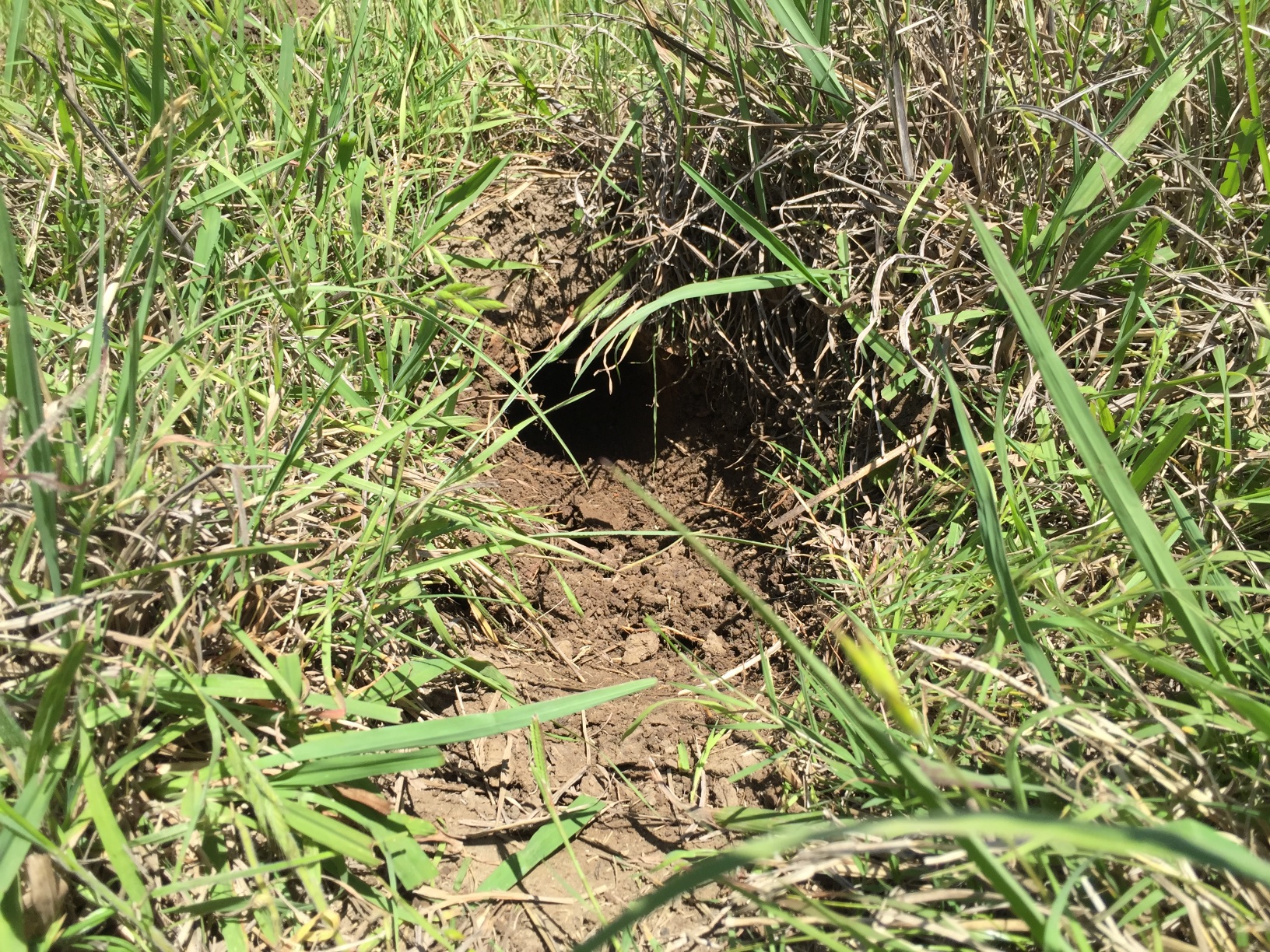 This part of the ditch has old pipes that take the water under the burm. I can find two of the three that used to be functional.
This part of the ditch has old pipes that take the water under the burm. I can find two of the three that used to be functional.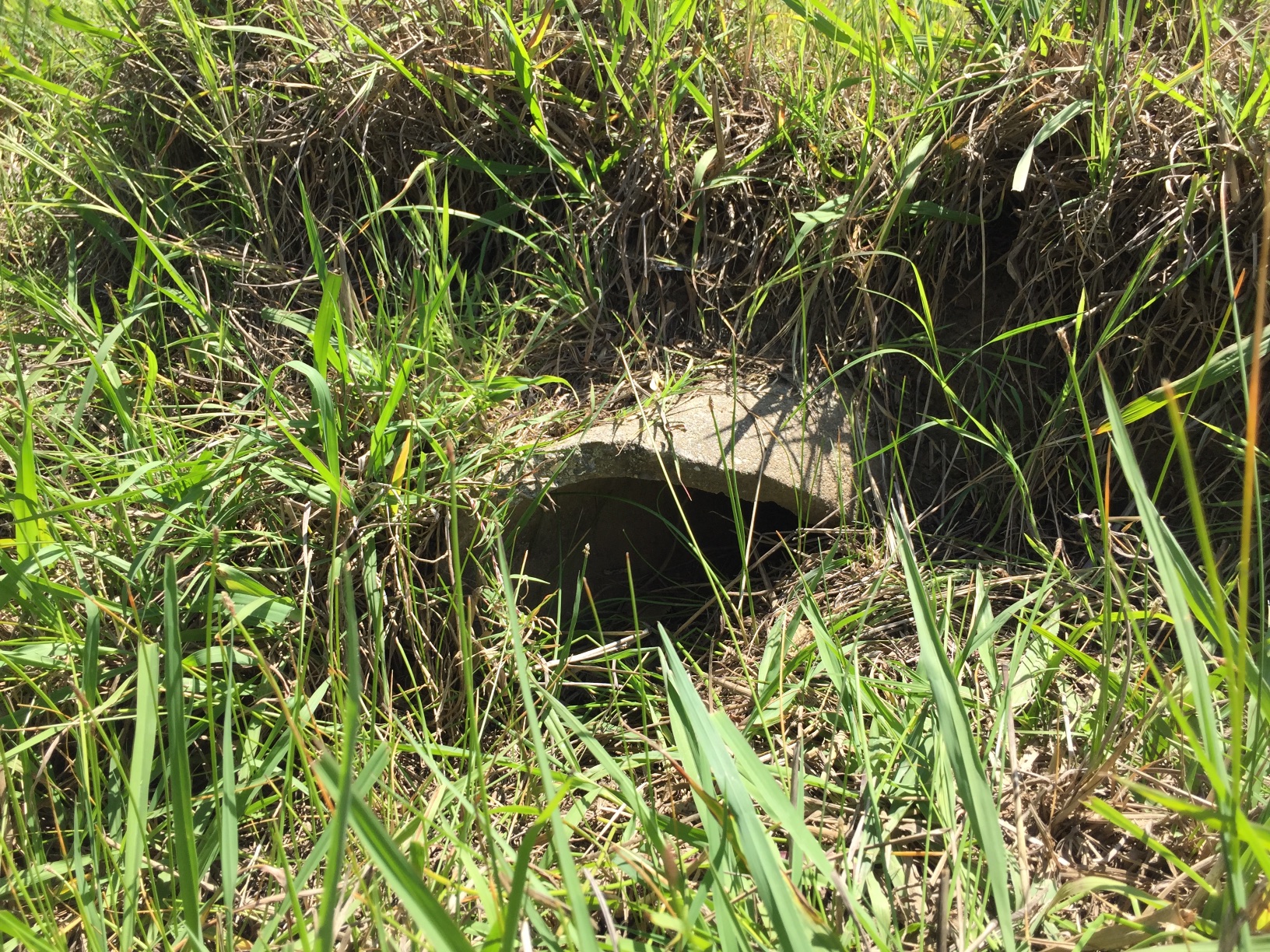 The first job is to dig out around both ends of these.
The first job is to dig out around both ends of these.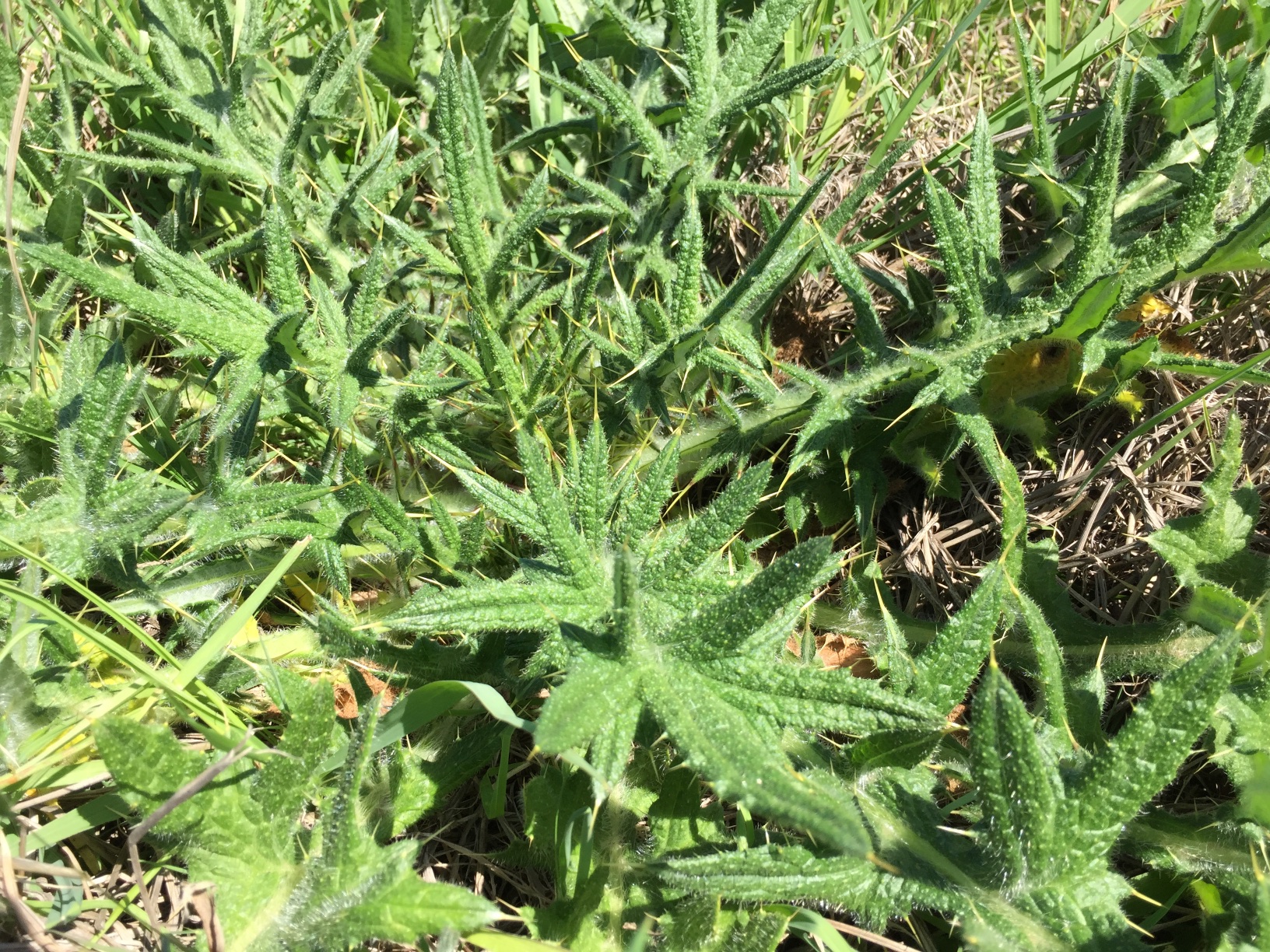 As I walk through the pasture I find thistles that need to be chopped.
As I walk through the pasture I find thistles that need to be chopped. The rest of the pasture doesn’t have those pipes, but instead has cut-outs or places where the burm is cut away to allow the water to flow from the ditch into the pasture. I didn’t get photos of those. This photo is a cut-out (under the fence) that I had to fill in because it was where we had cut through the burm to allow water flow INTO the ditch in the winter to help drain the rainwater that was all around the barn.
The rest of the pasture doesn’t have those pipes, but instead has cut-outs or places where the burm is cut away to allow the water to flow from the ditch into the pasture. I didn’t get photos of those. This photo is a cut-out (under the fence) that I had to fill in because it was where we had cut through the burm to allow water flow INTO the ditch in the winter to help drain the rainwater that was all around the barn. 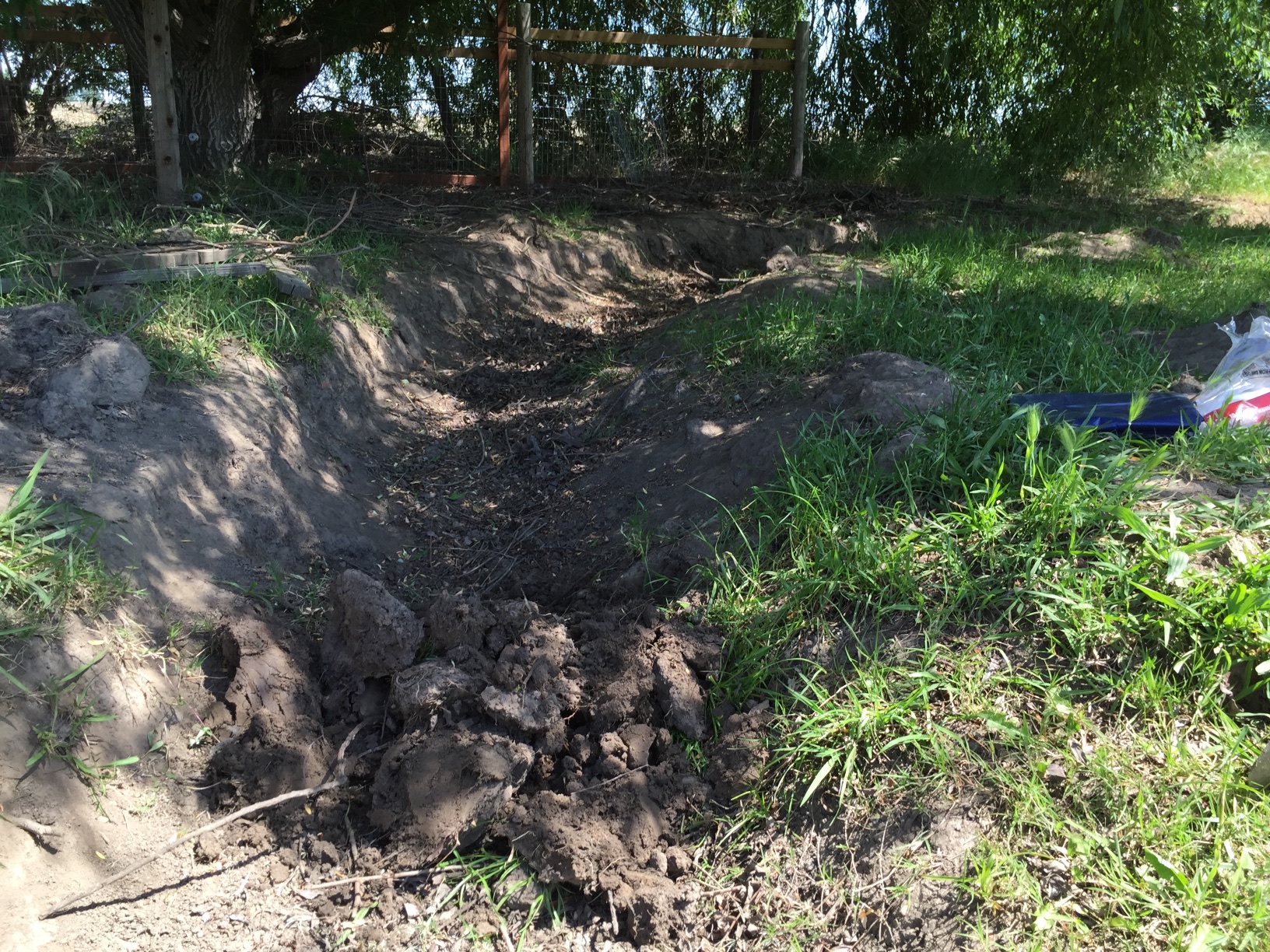 Here is the place at the northeast corner of the pasture where I have to put a tarp to keep the water backed up in the ditch. After this point the ditch turns south and drains at the southeast corner of the property.
Here is the place at the northeast corner of the pasture where I have to put a tarp to keep the water backed up in the ditch. After this point the ditch turns south and drains at the southeast corner of the property.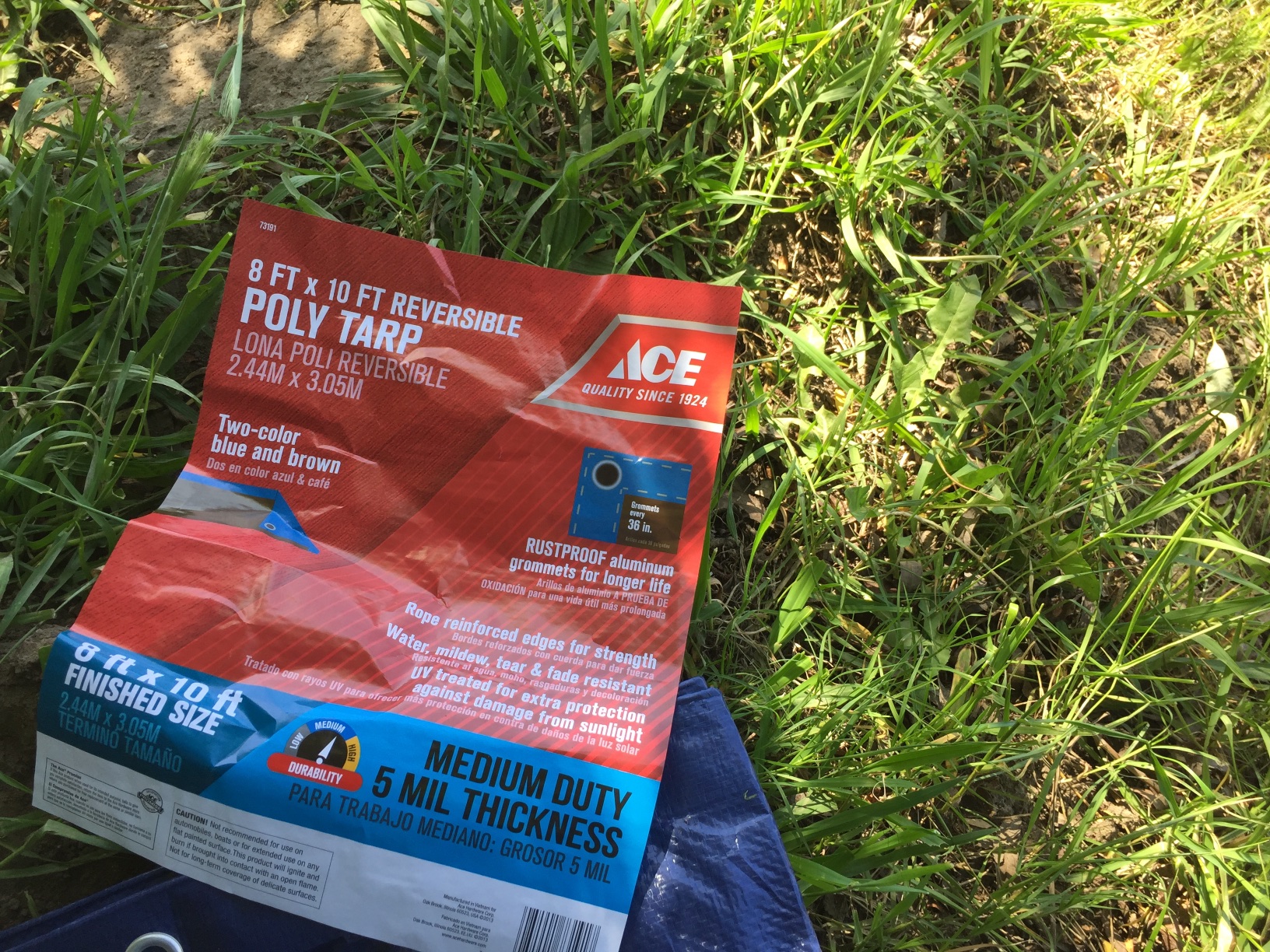 I can never remember what size tarp to get. I bought 2 sizes and took this photo to remind myself that this one is just fine.
I can never remember what size tarp to get. I bought 2 sizes and took this photo to remind myself that this one is just fine.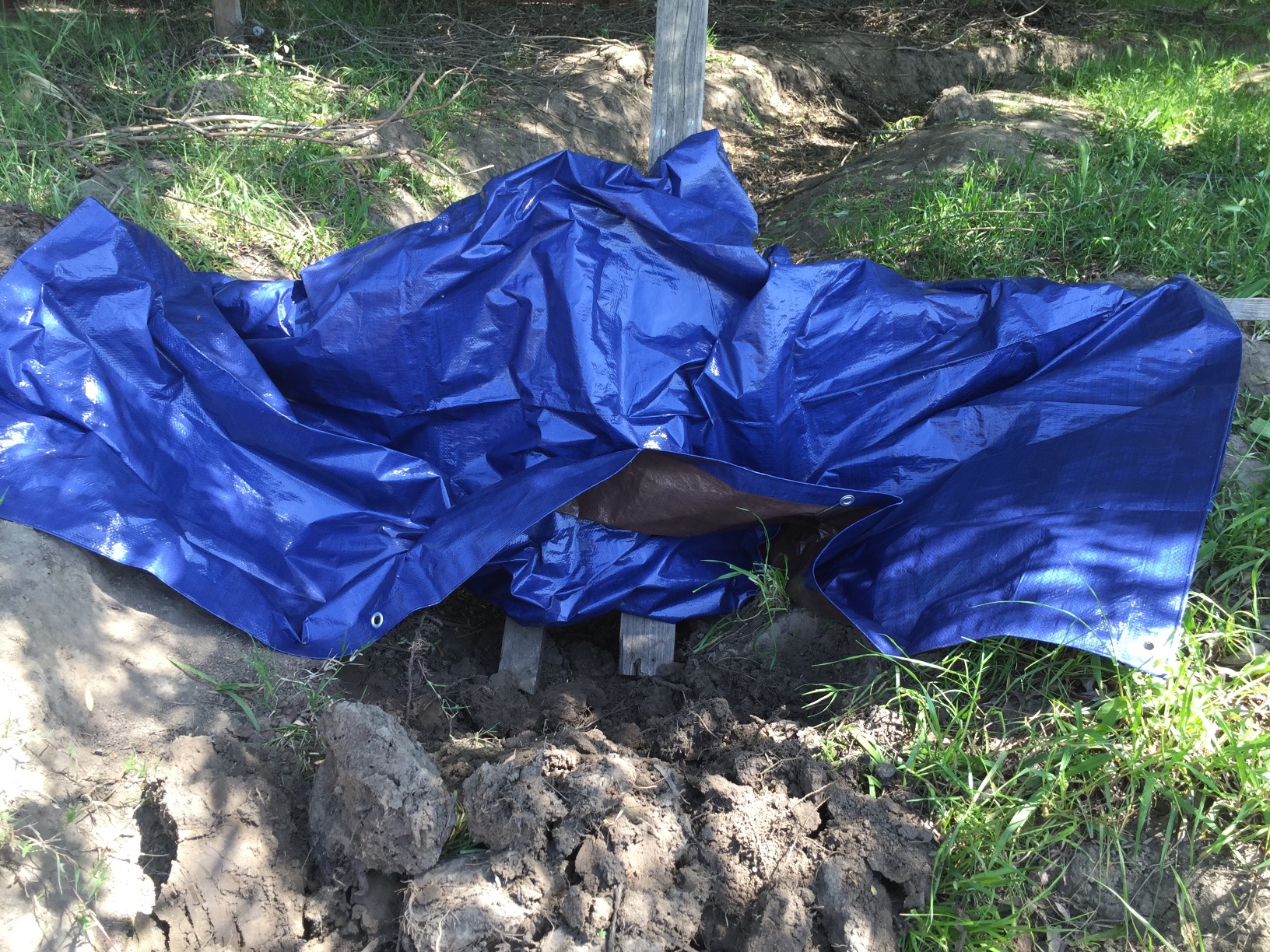 The idea is to set the tarp so that the edges are buried in dirt and those boards behind will keep the water from pushing the tarp down flat. I did this twice.
The idea is to set the tarp so that the edges are buried in dirt and those boards behind will keep the water from pushing the tarp down flat. I did this twice. 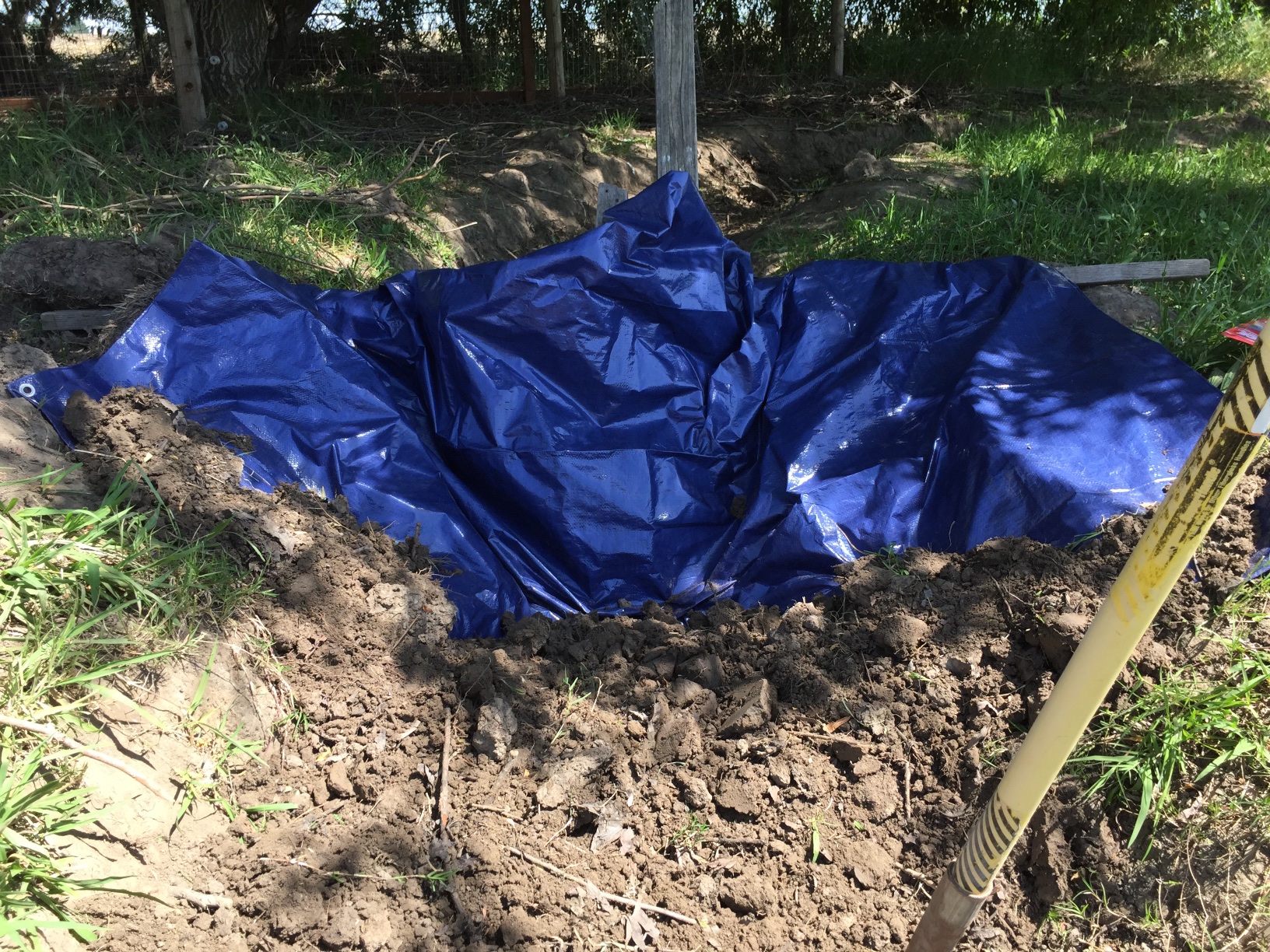 The first time the dirt that holds the tarp down on the bottom was too high. That means when I released the tarp at the end of irrigating there would still be a dam. I have a hard enough time getting the ditch to empty that I don’t need to impede it more.
The first time the dirt that holds the tarp down on the bottom was too high. That means when I released the tarp at the end of irrigating there would still be a dam. I have a hard enough time getting the ditch to empty that I don’t need to impede it more.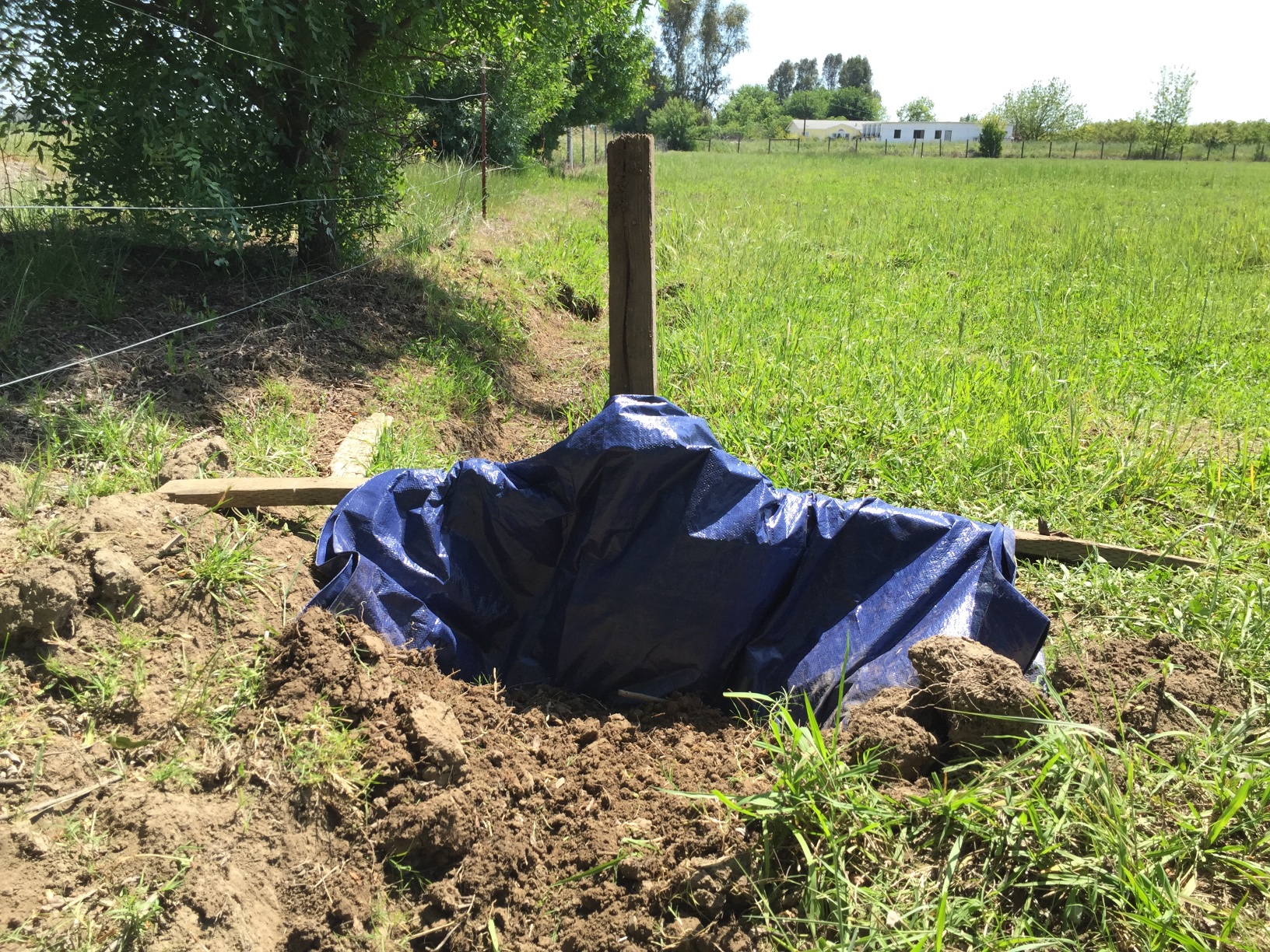 This is a second tarp that I set just around the corner in the ditch that goes south. I shouldn’t have to do this, but due to gopher holes, tree roots, and maybe my lack of irrigator skills it seems that one is never enough. Two tarps hold the water back better. Or at least one is a back-up for the other.
This is a second tarp that I set just around the corner in the ditch that goes south. I shouldn’t have to do this, but due to gopher holes, tree roots, and maybe my lack of irrigator skills it seems that one is never enough. Two tarps hold the water back better. Or at least one is a back-up for the other.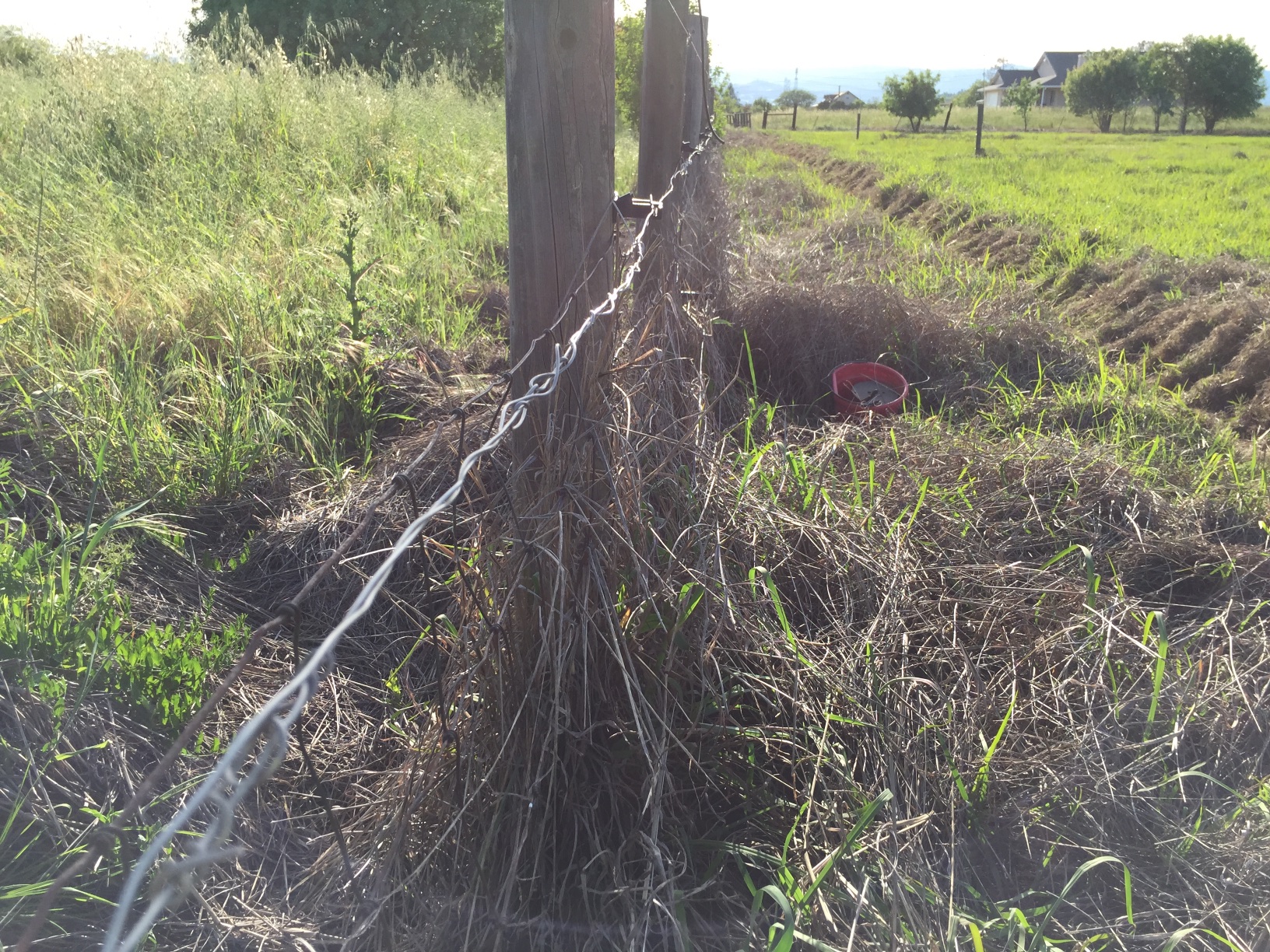 While I was working in the pasture I saw that a couple of lambs had their heads through the electric net fence and didn’t seem to care. That prompted a search for the problem with the electric fence. I found a broken wire at the south end. I got new wire and fixed it but then found several more places where I had joined new wire to old. The more times you do that the less conductivity there is. So I took out a long stretch of the old pieced-together wire and replaced it. Low and behold, my tester showed higher strength than it has in years!
While I was working in the pasture I saw that a couple of lambs had their heads through the electric net fence and didn’t seem to care. That prompted a search for the problem with the electric fence. I found a broken wire at the south end. I got new wire and fixed it but then found several more places where I had joined new wire to old. The more times you do that the less conductivity there is. So I took out a long stretch of the old pieced-together wire and replaced it. Low and behold, my tester showed higher strength than it has in years!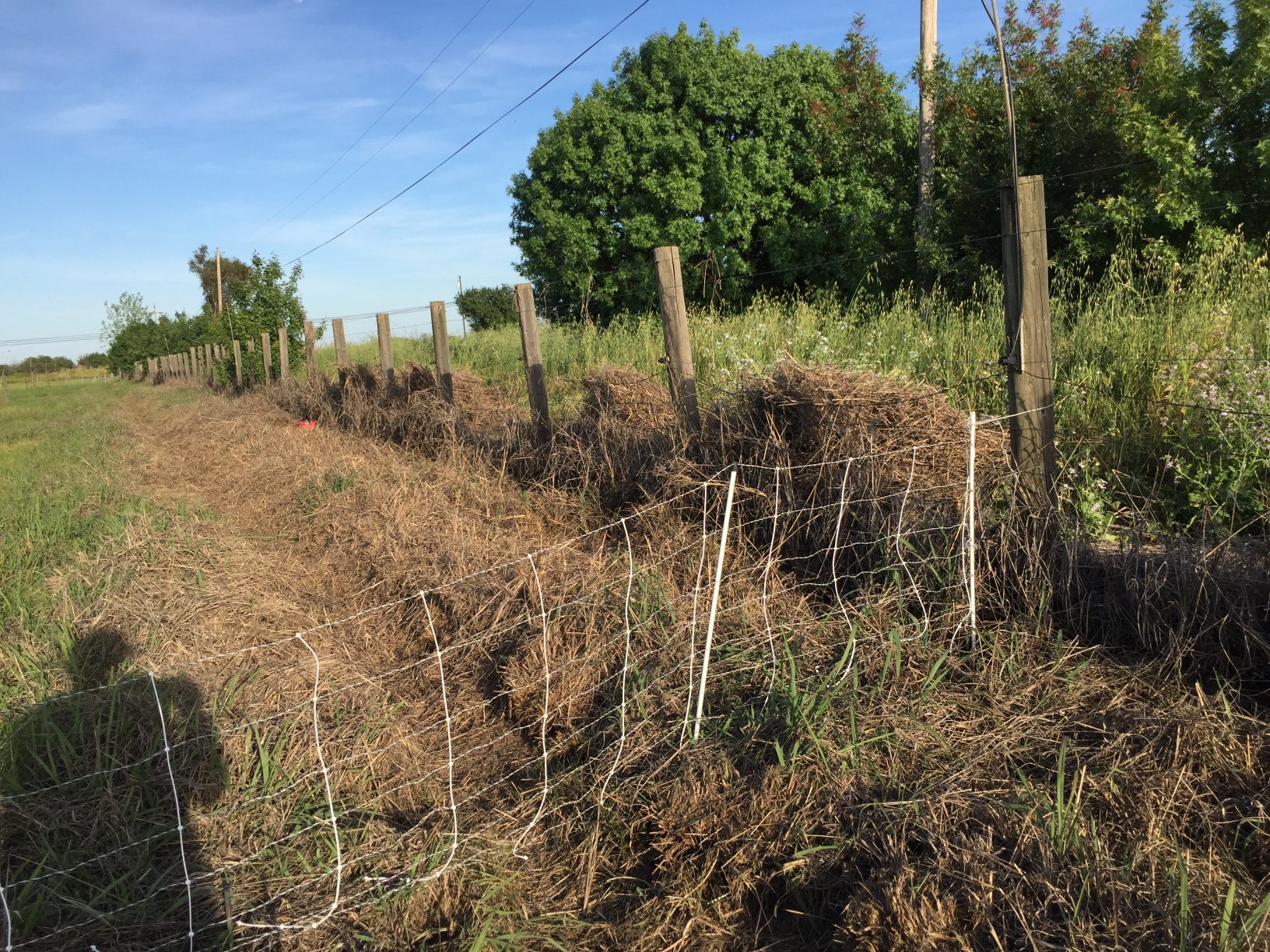 One thing leads to another. While I was at that end of the pasture I was bothered again by the old dallisgrass that effectively mulches my pasture. It’s one thing to mulch a garden to keep weeds from growing, but mulching a pasture is counter-productive. If you search dallisgrass in this blog you’ll find many attempts to deal with this. This time I was simply knocking it off the electric wire that is about a foot and a half up on inside this fenceline. It broke and pulled away so easily at this time (this is last year’s dry grass) that I started pulling it away by the armfuls. I didn’t have any tools or even gloves, but threw mounds of it over the fence–hey, I’ll mulch the outside of the fence and maybe keep the growth down there. That felt somewhat productive although it may not be useful at all. But at least I could see a difference in the before and after.
One thing leads to another. While I was at that end of the pasture I was bothered again by the old dallisgrass that effectively mulches my pasture. It’s one thing to mulch a garden to keep weeds from growing, but mulching a pasture is counter-productive. If you search dallisgrass in this blog you’ll find many attempts to deal with this. This time I was simply knocking it off the electric wire that is about a foot and a half up on inside this fenceline. It broke and pulled away so easily at this time (this is last year’s dry grass) that I started pulling it away by the armfuls. I didn’t have any tools or even gloves, but threw mounds of it over the fence–hey, I’ll mulch the outside of the fence and maybe keep the growth down there. That felt somewhat productive although it may not be useful at all. But at least I could see a difference in the before and after.